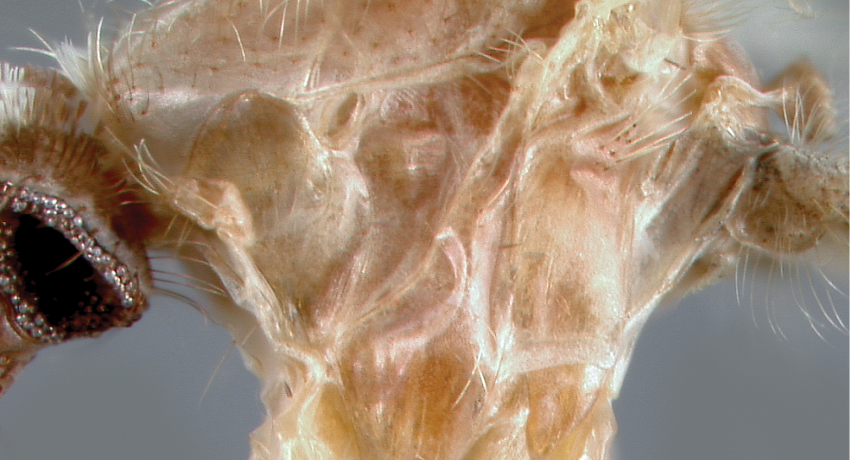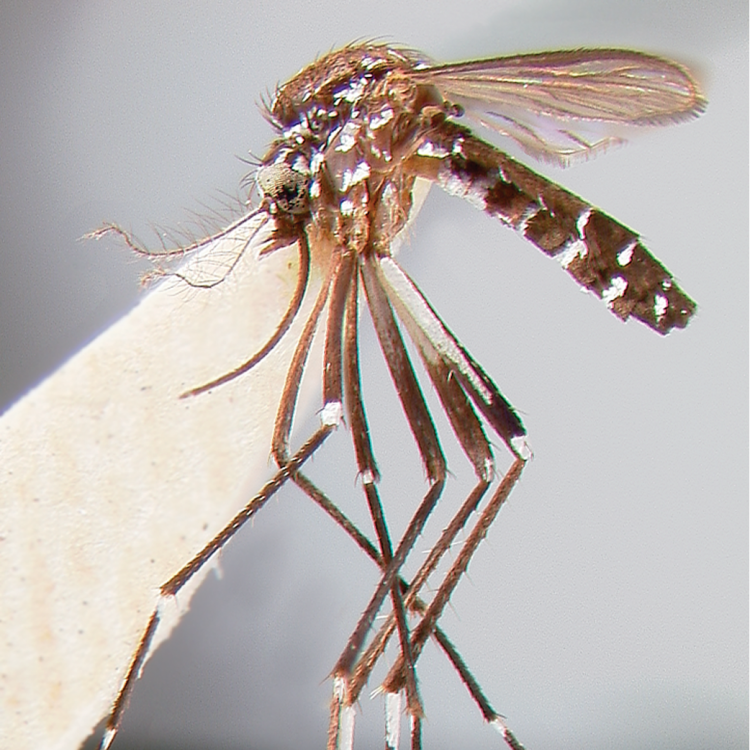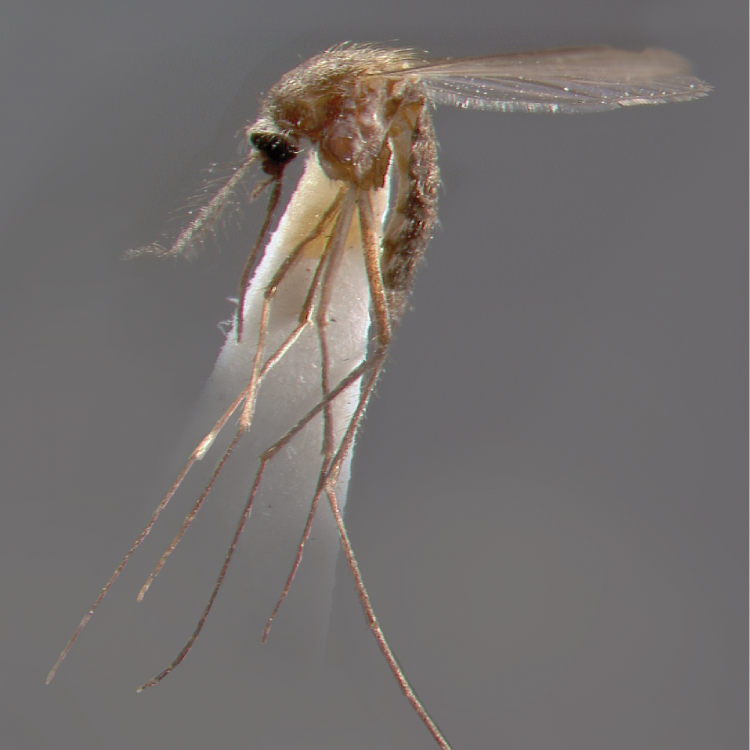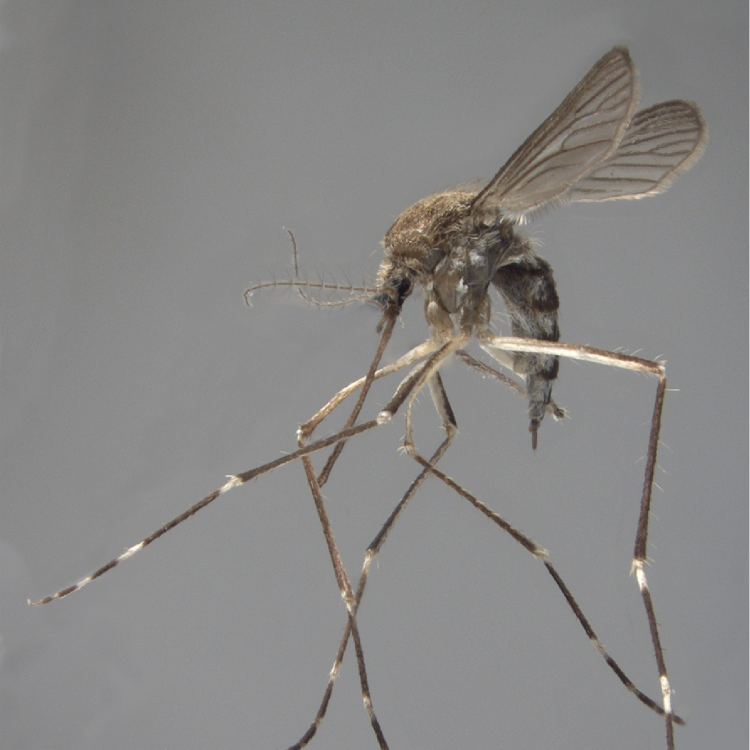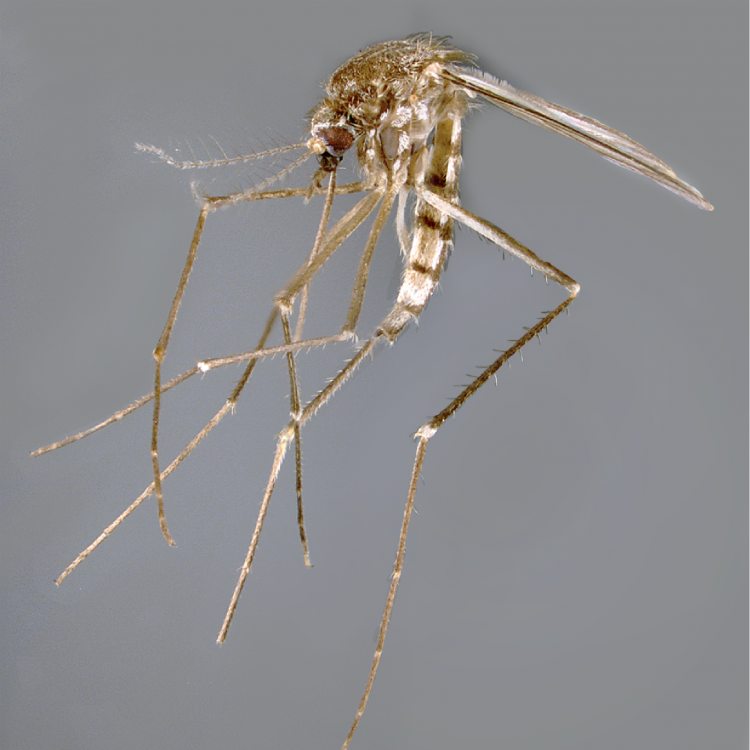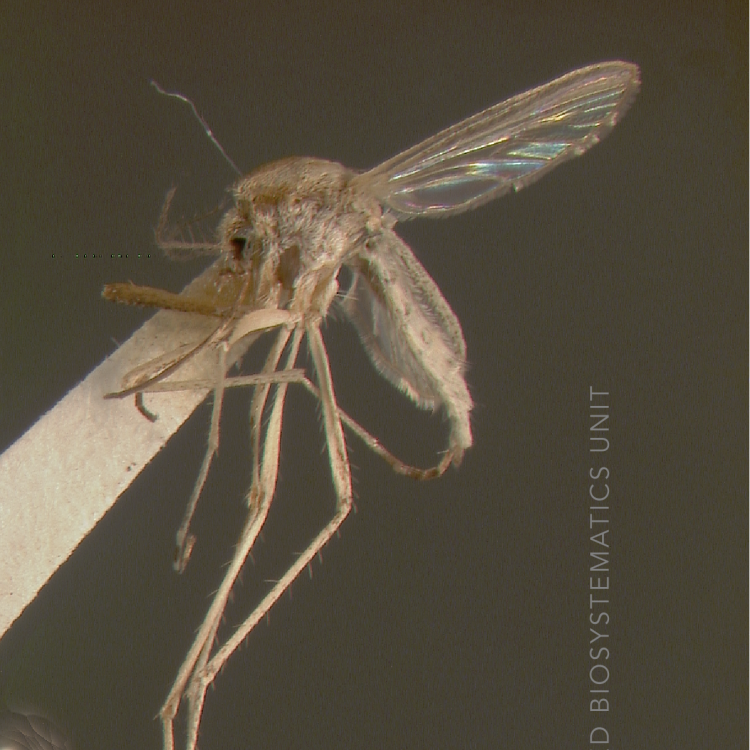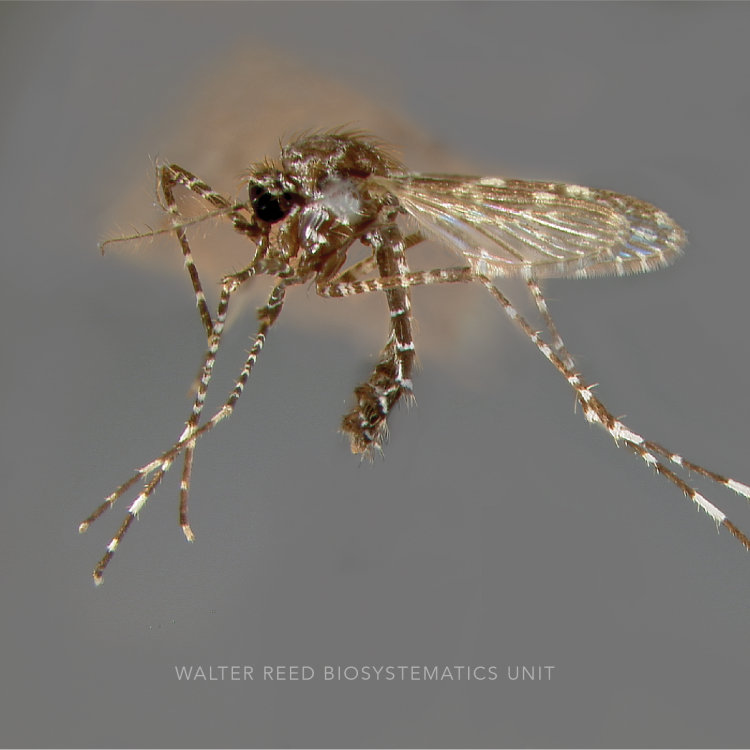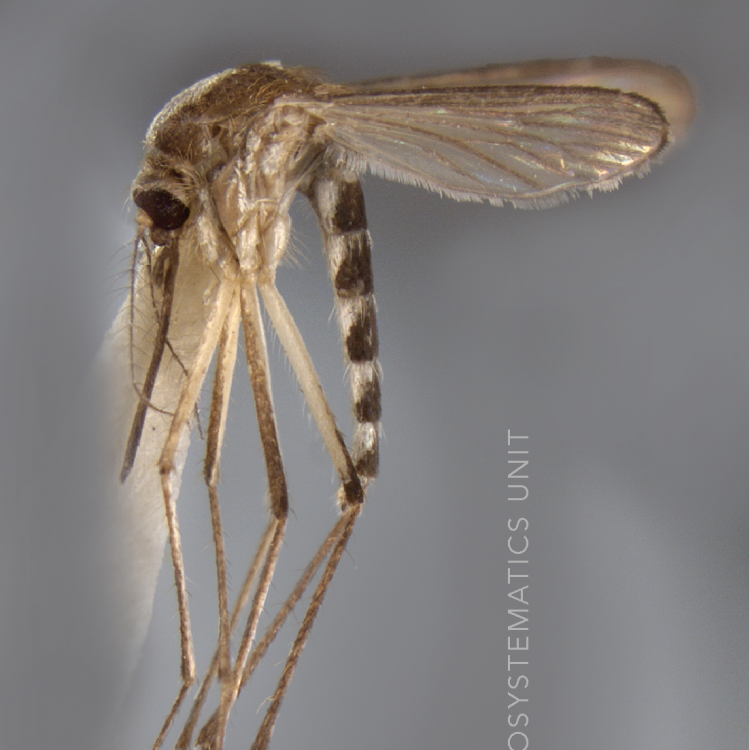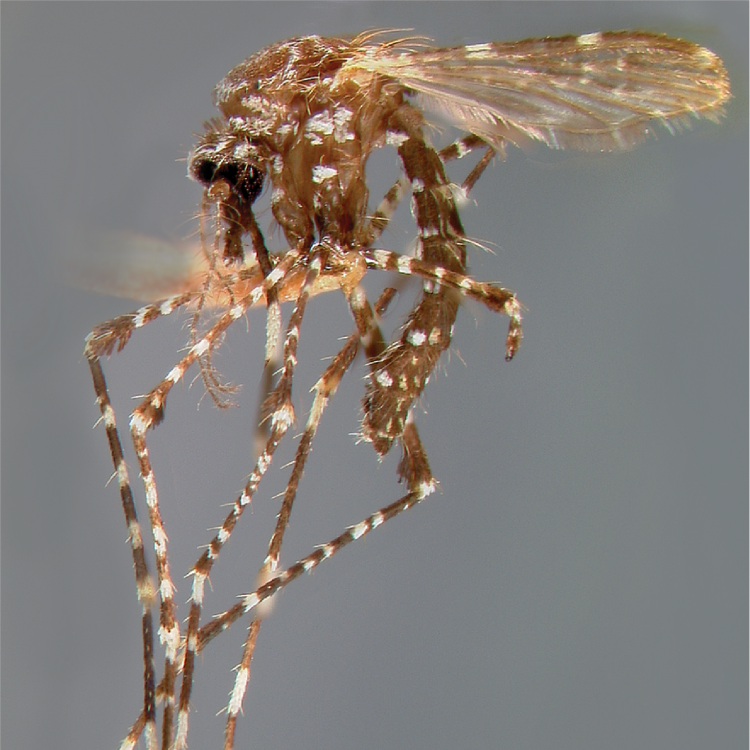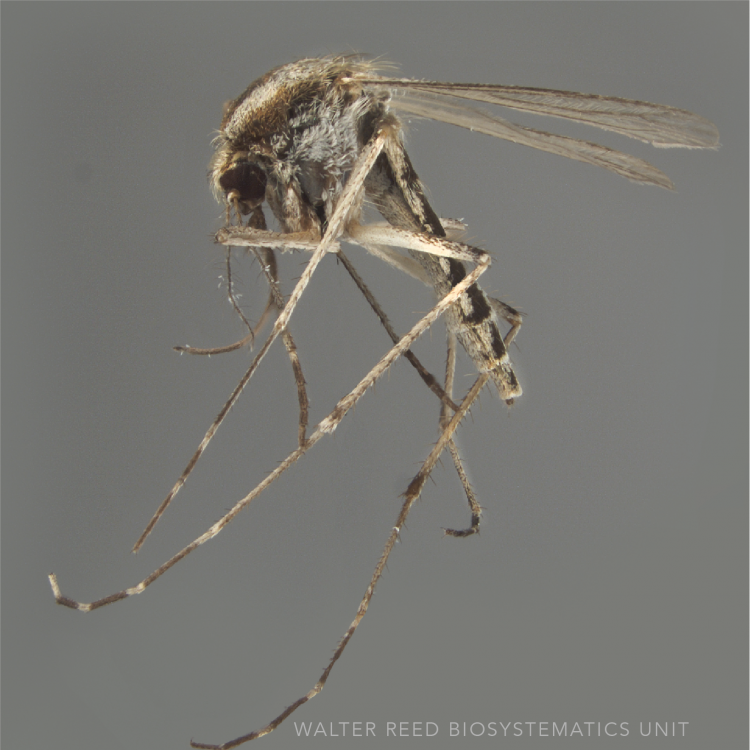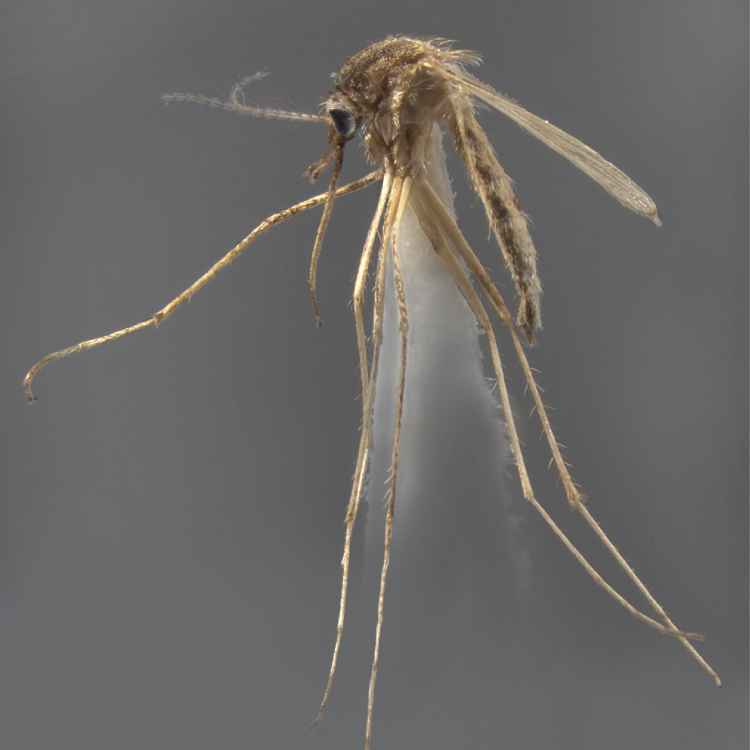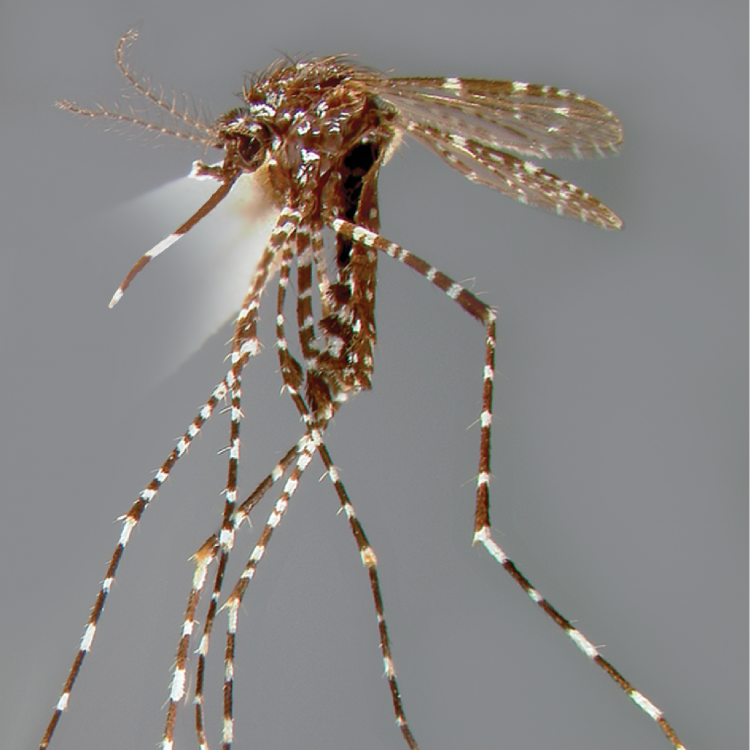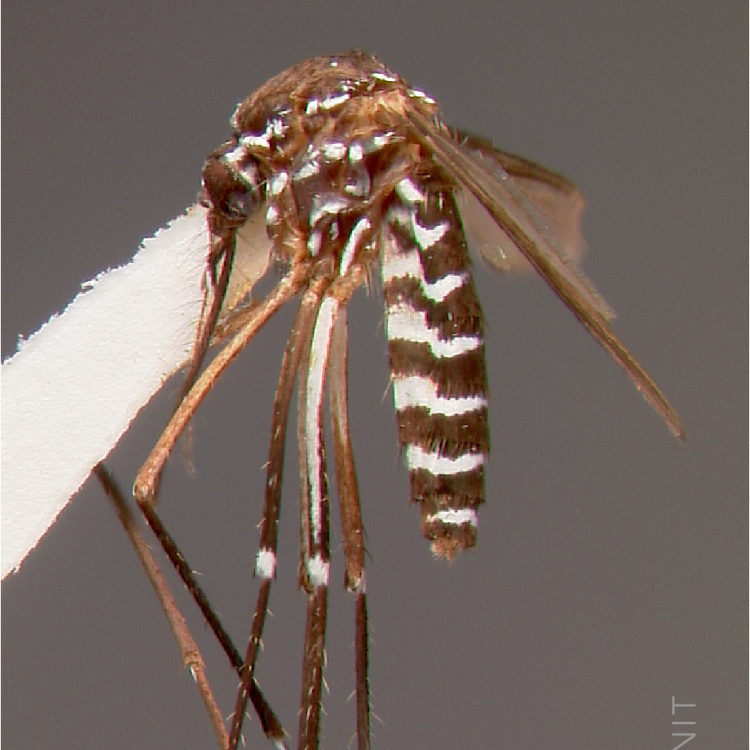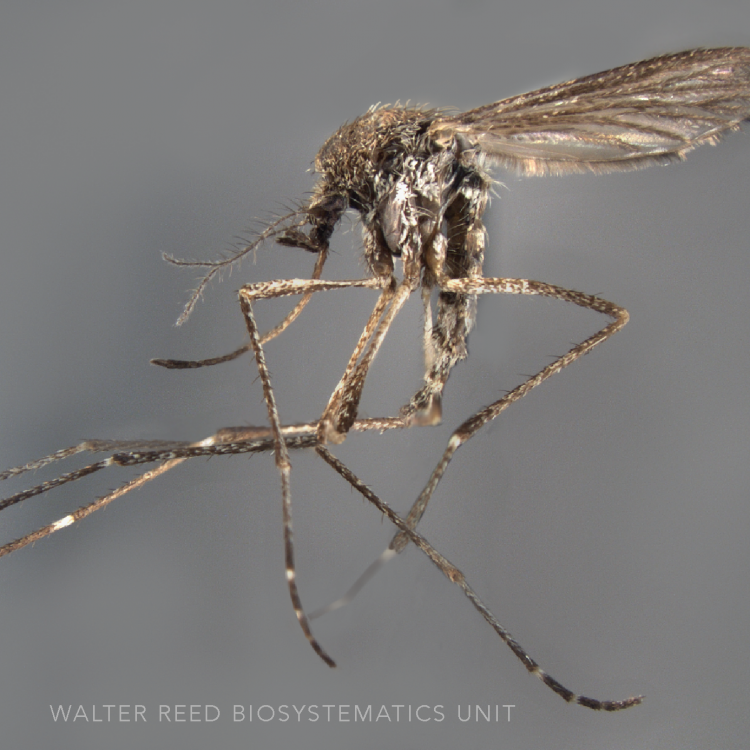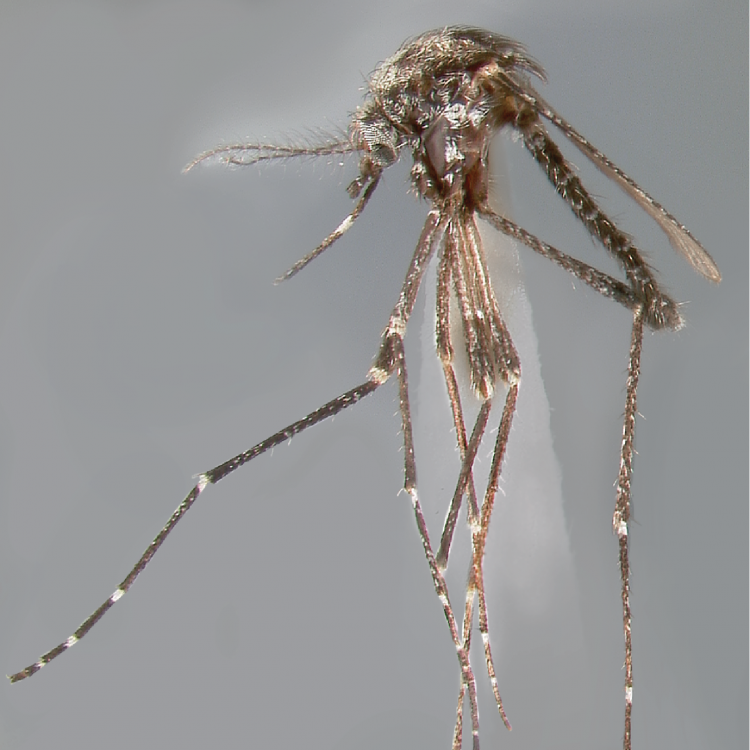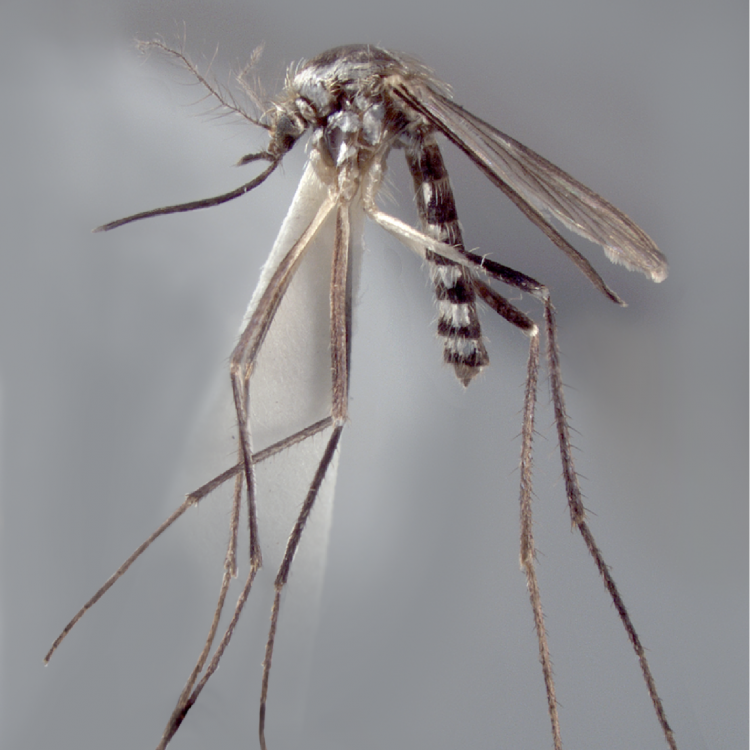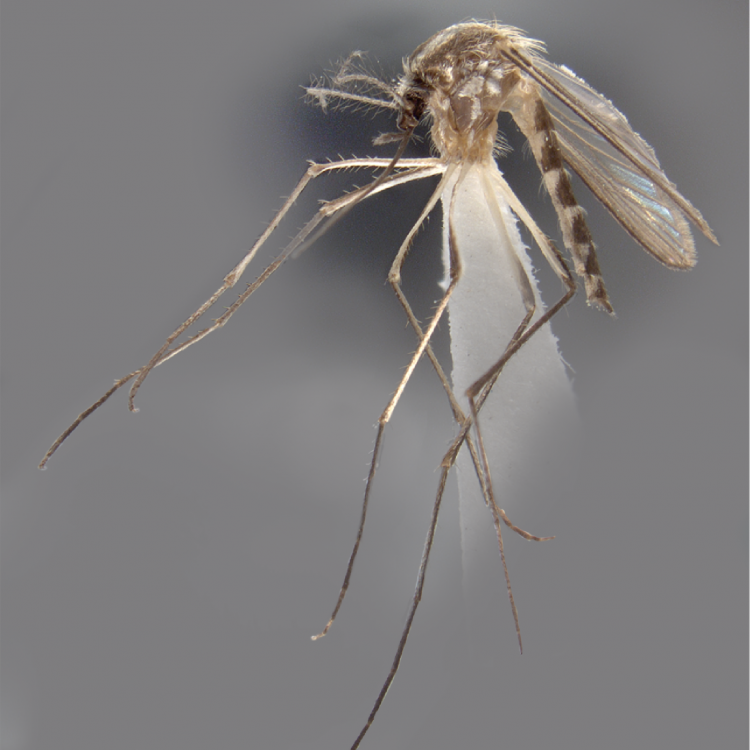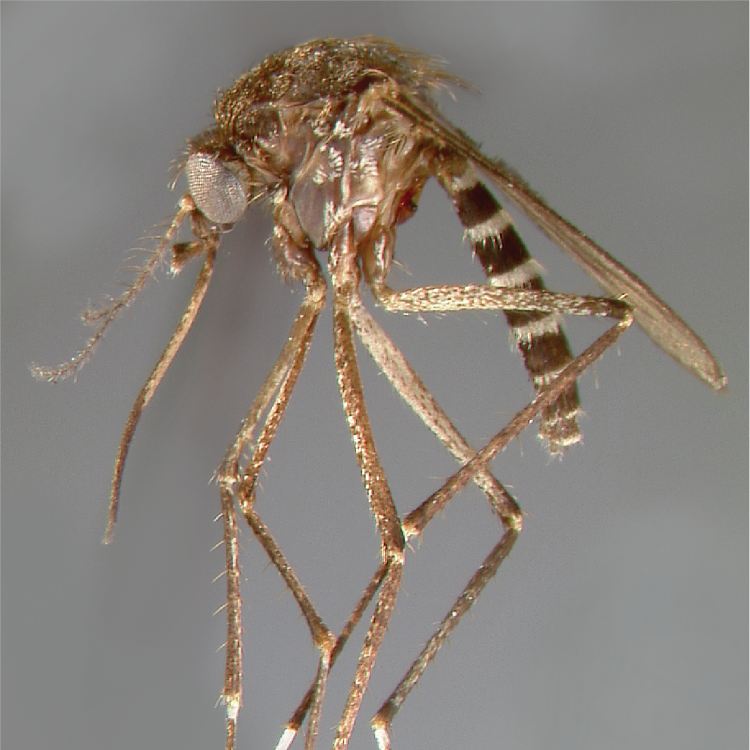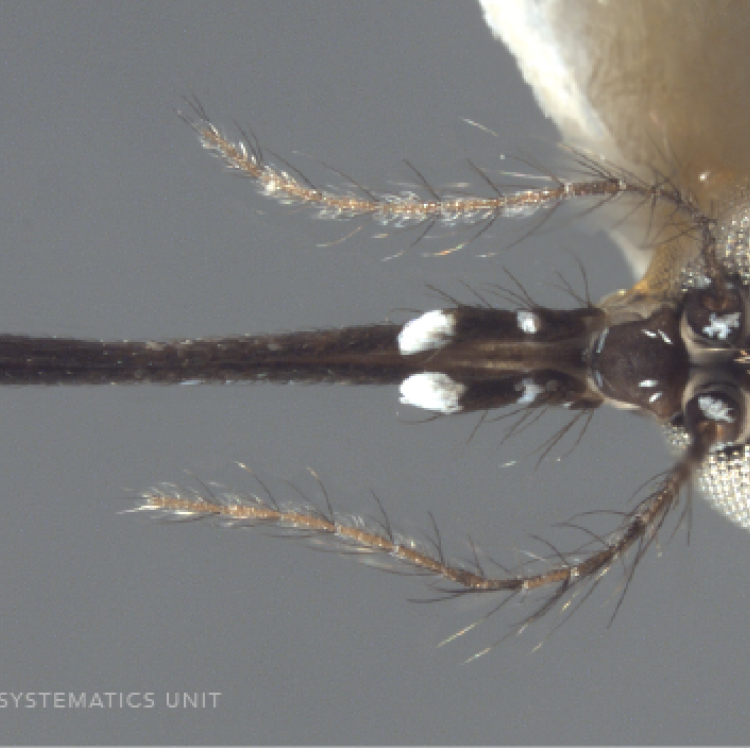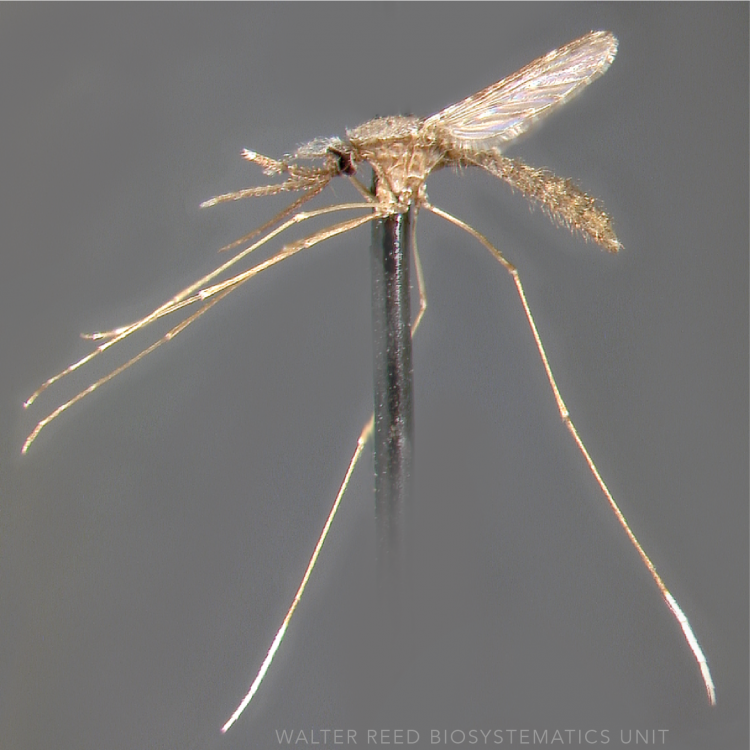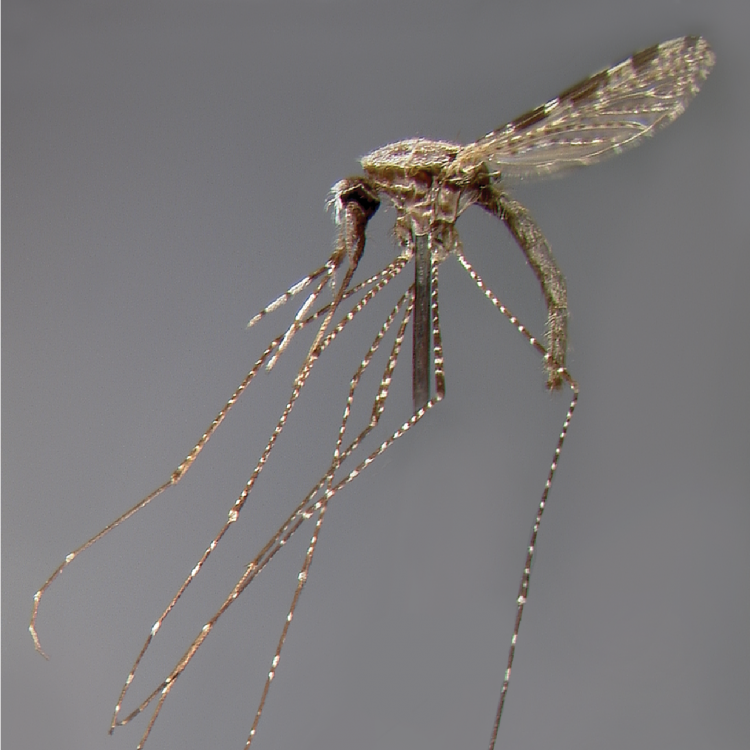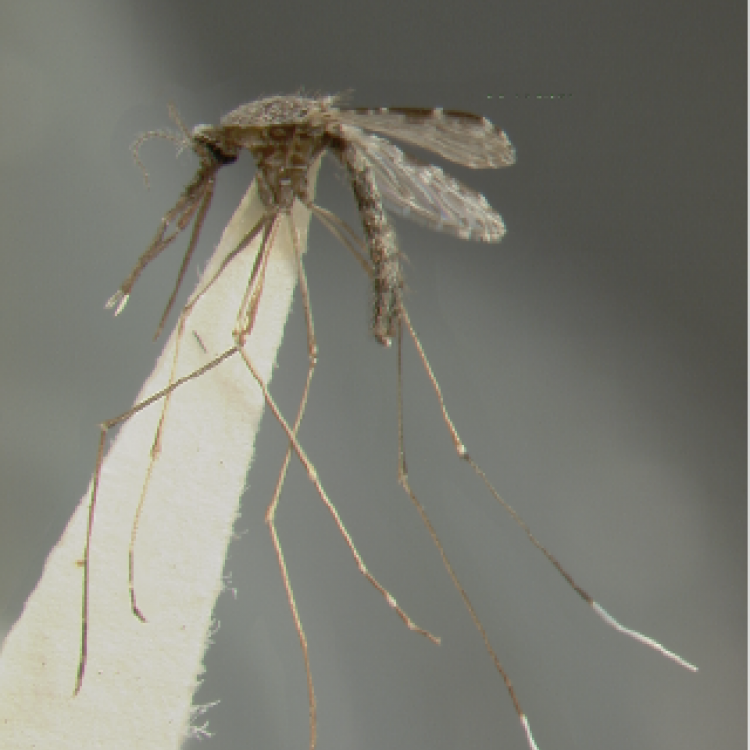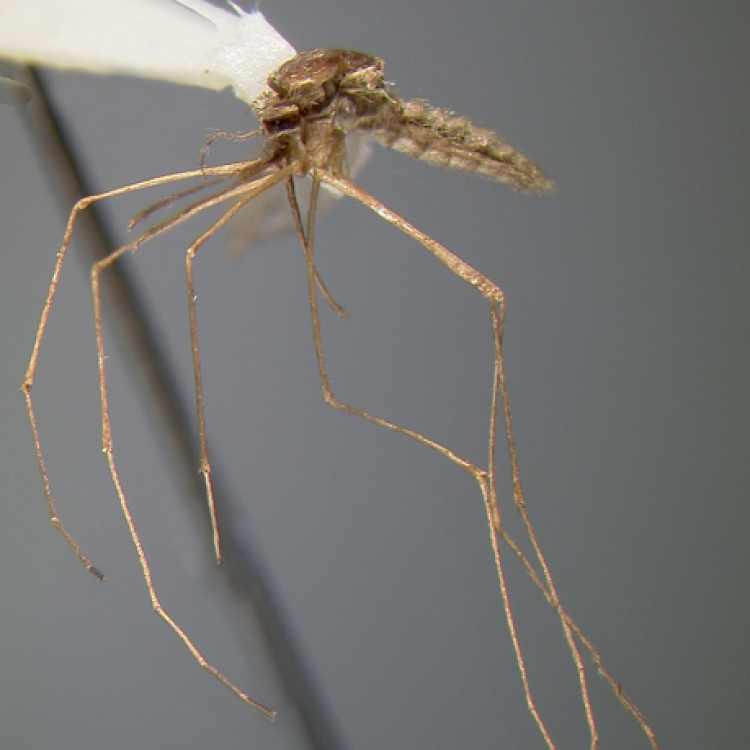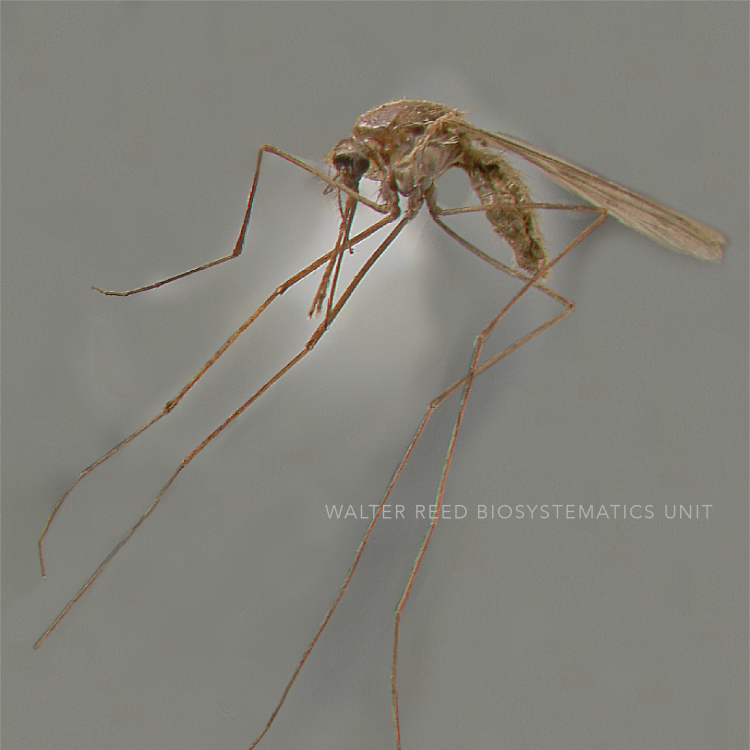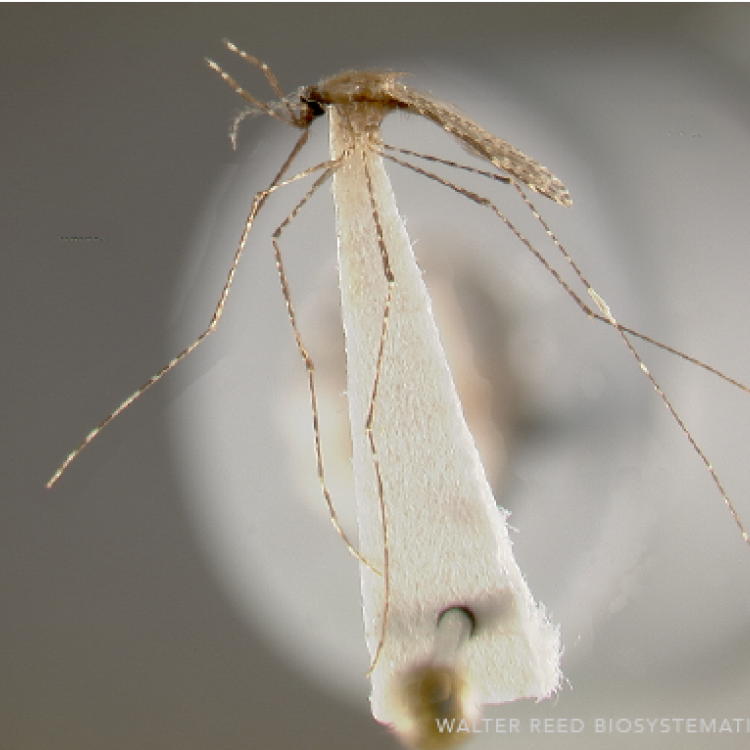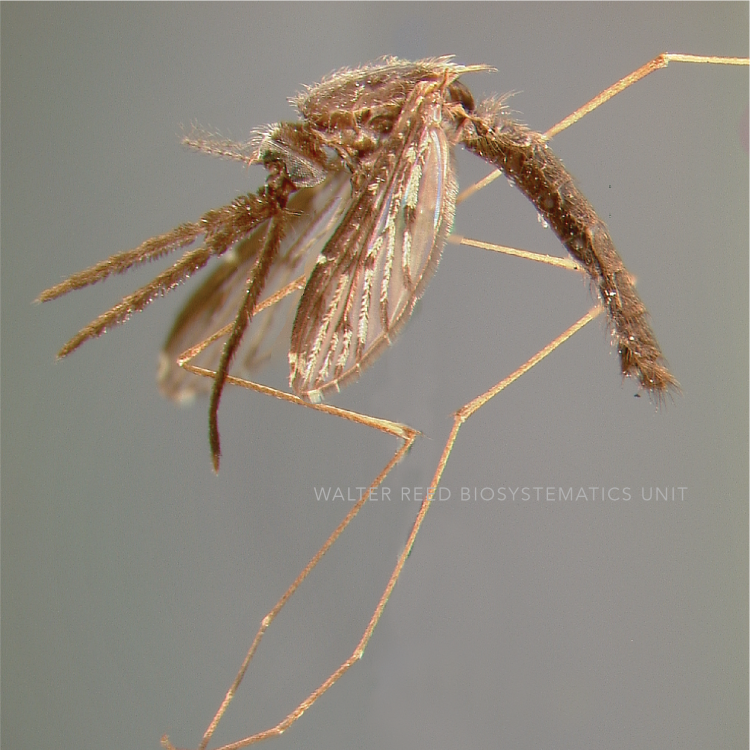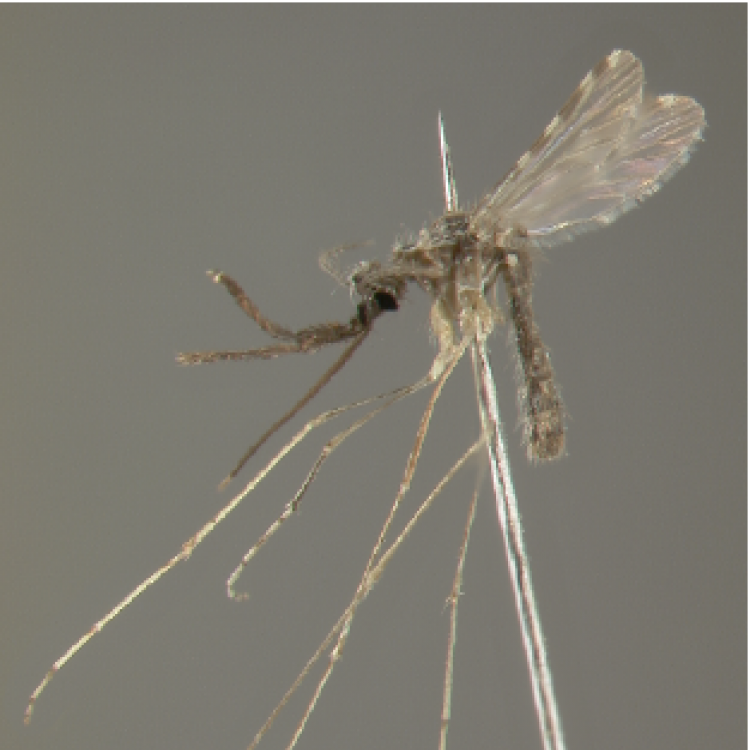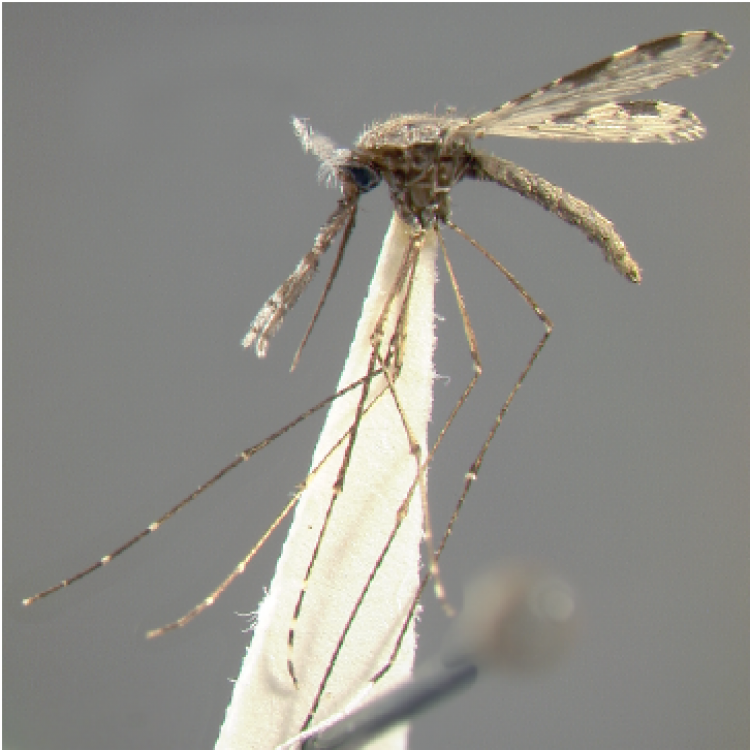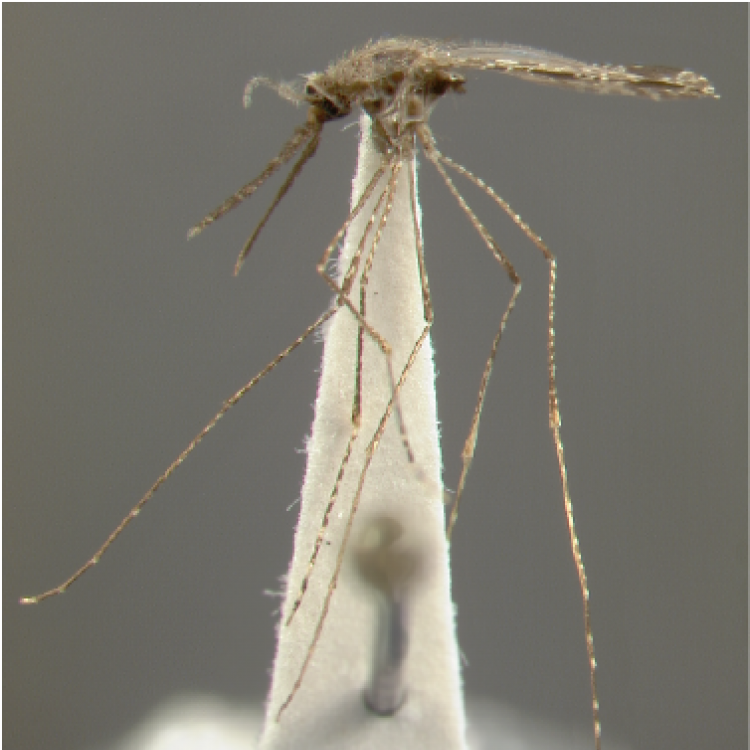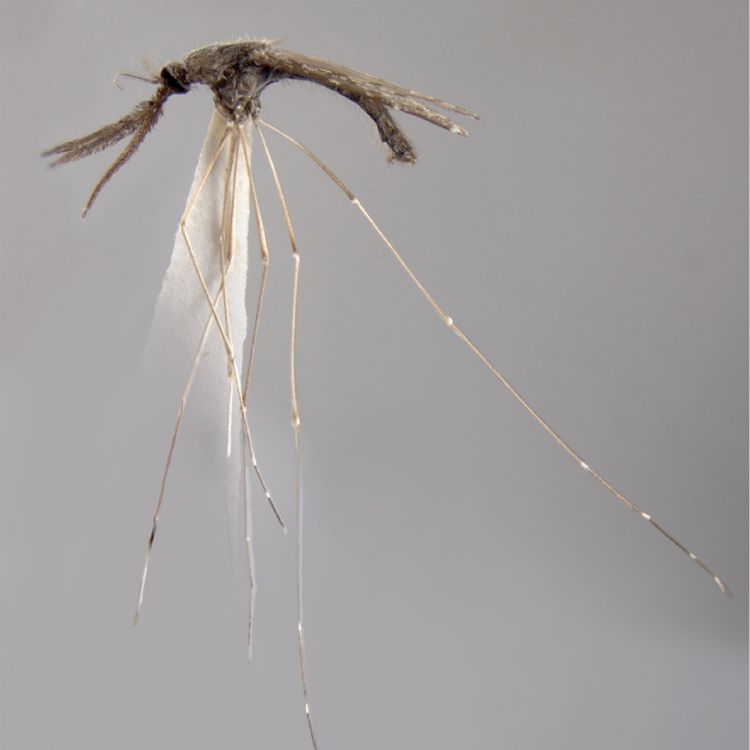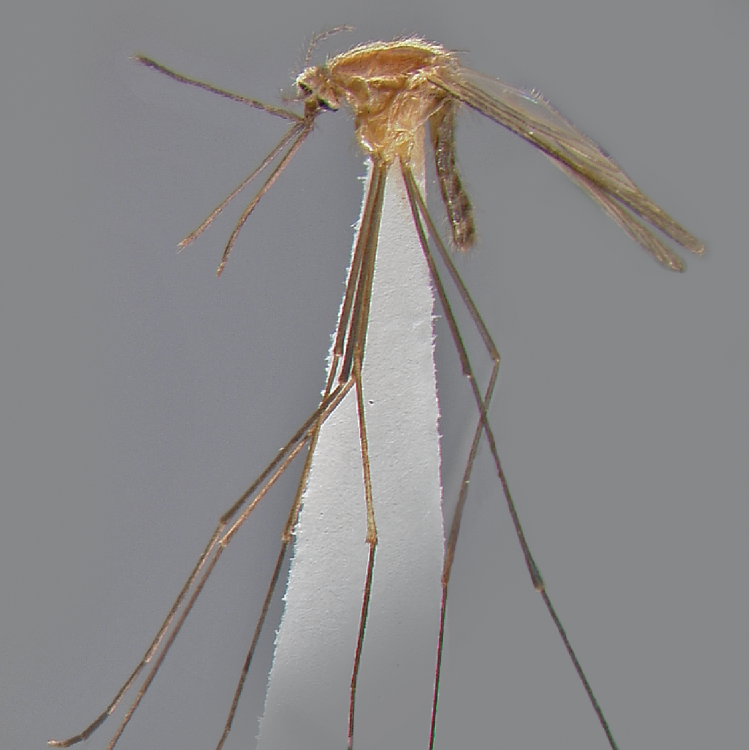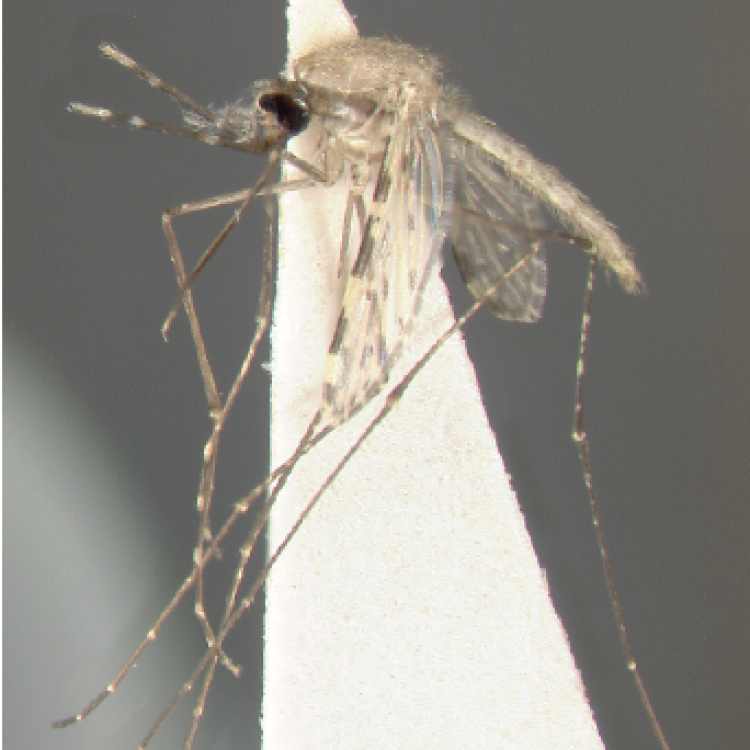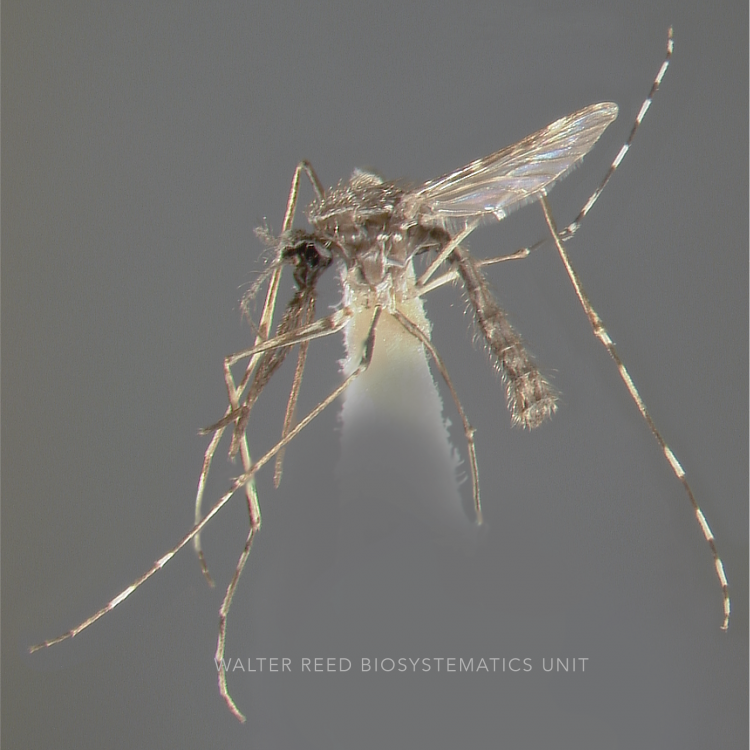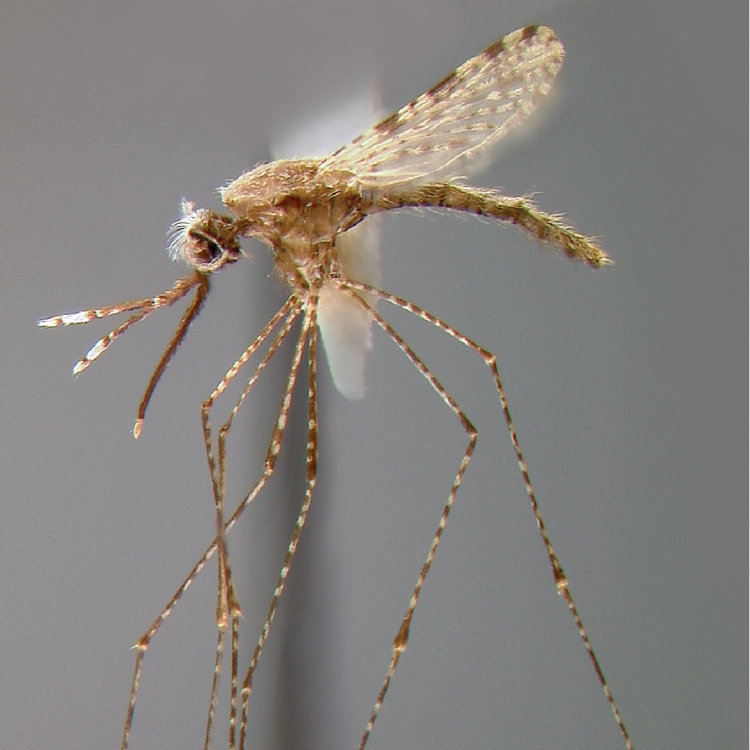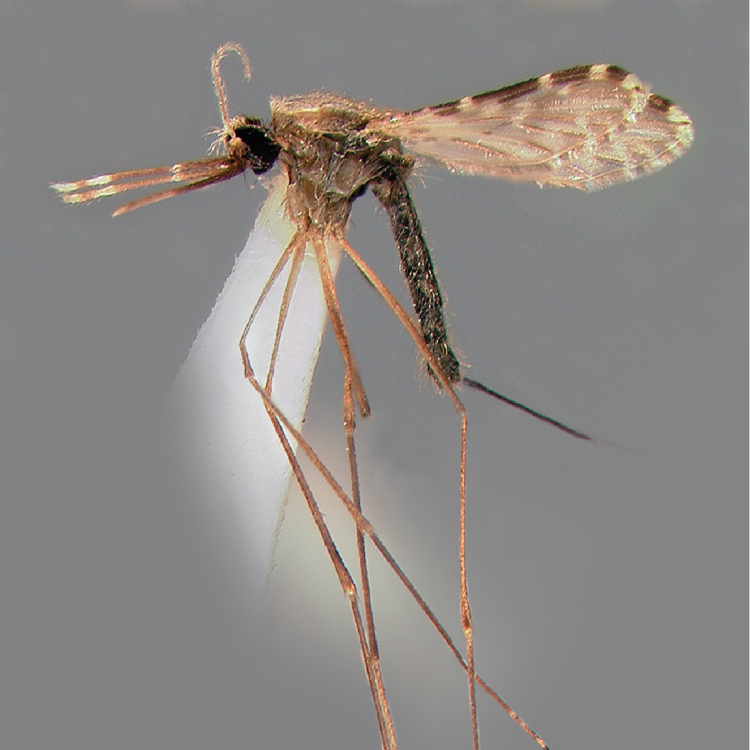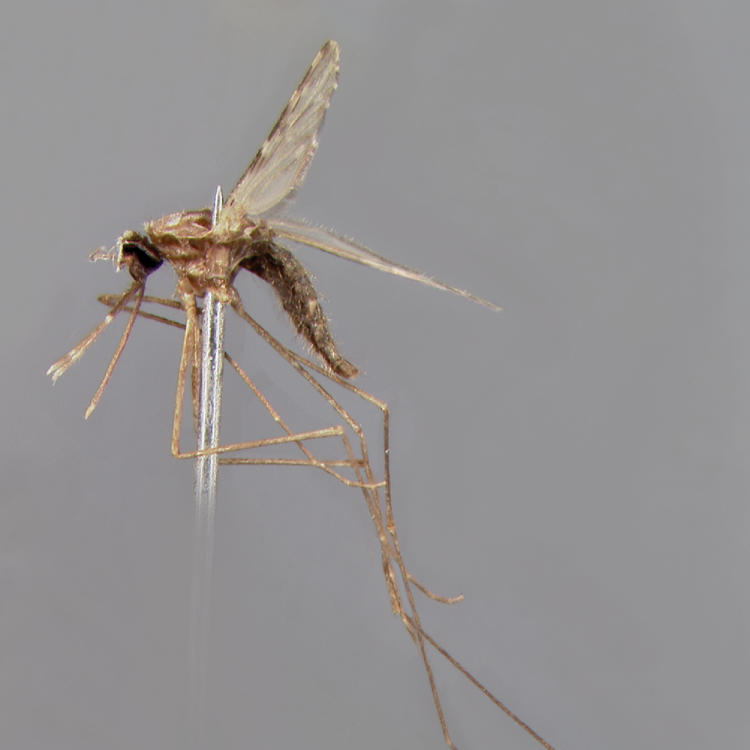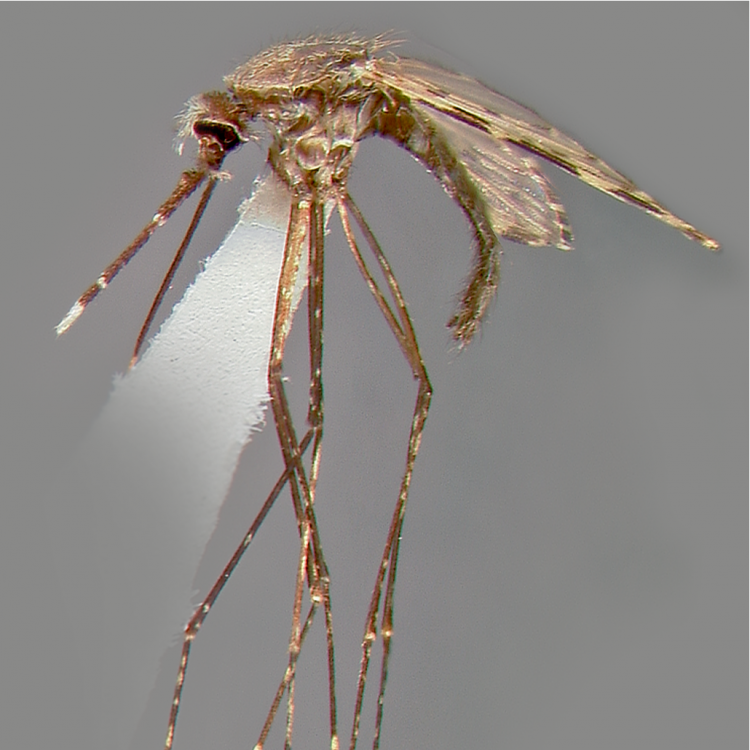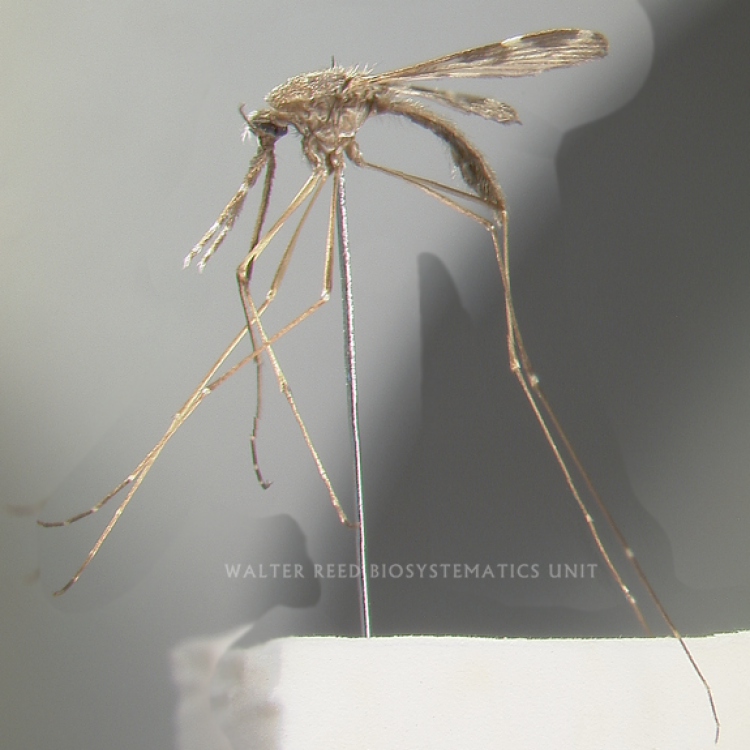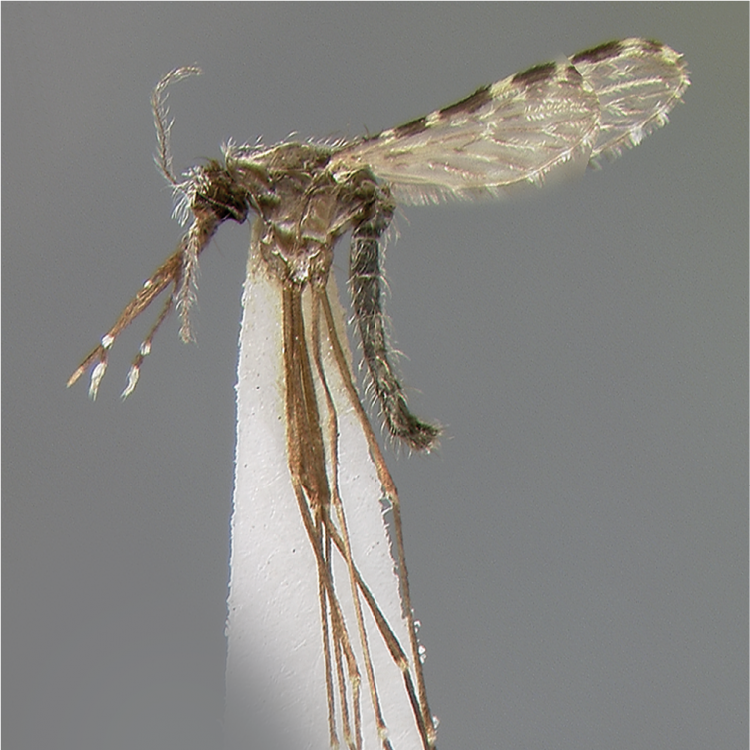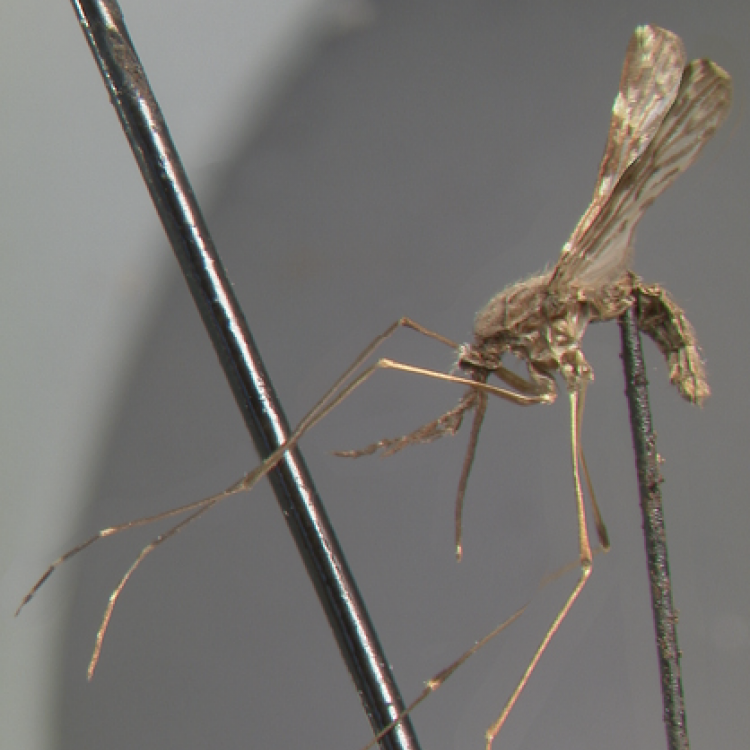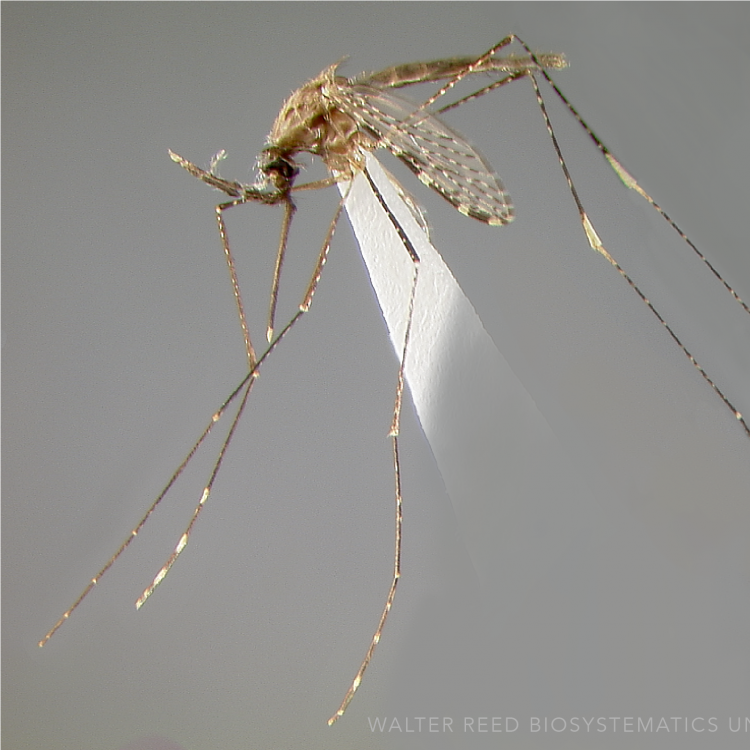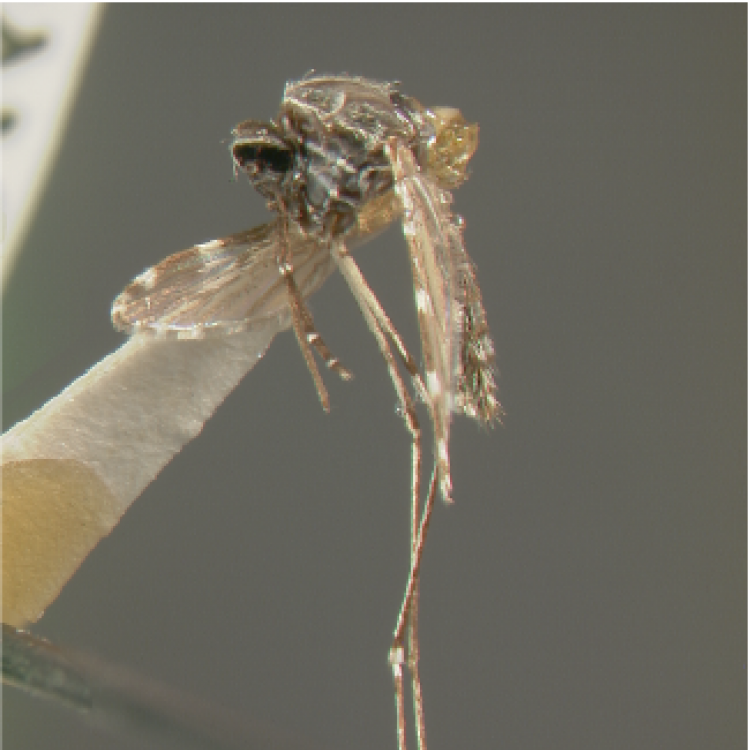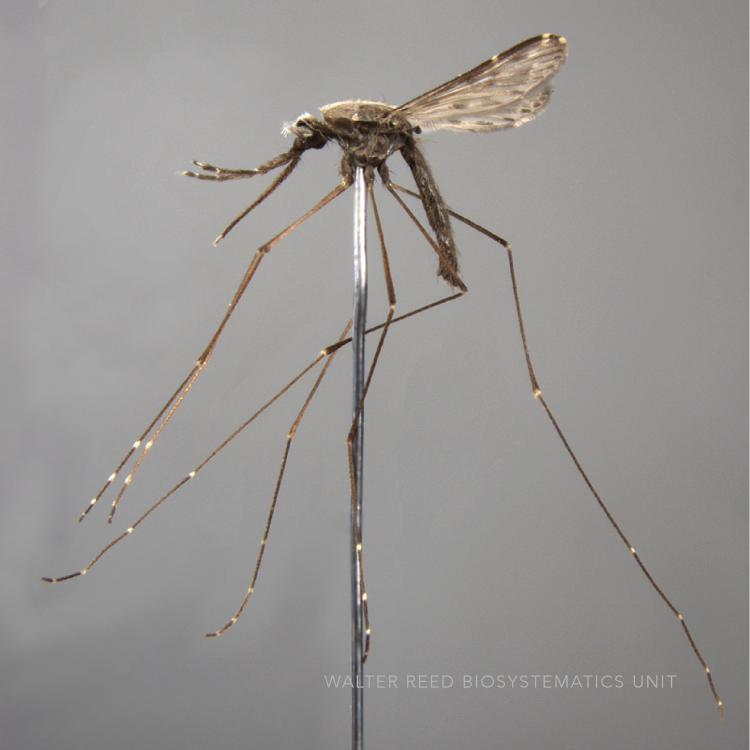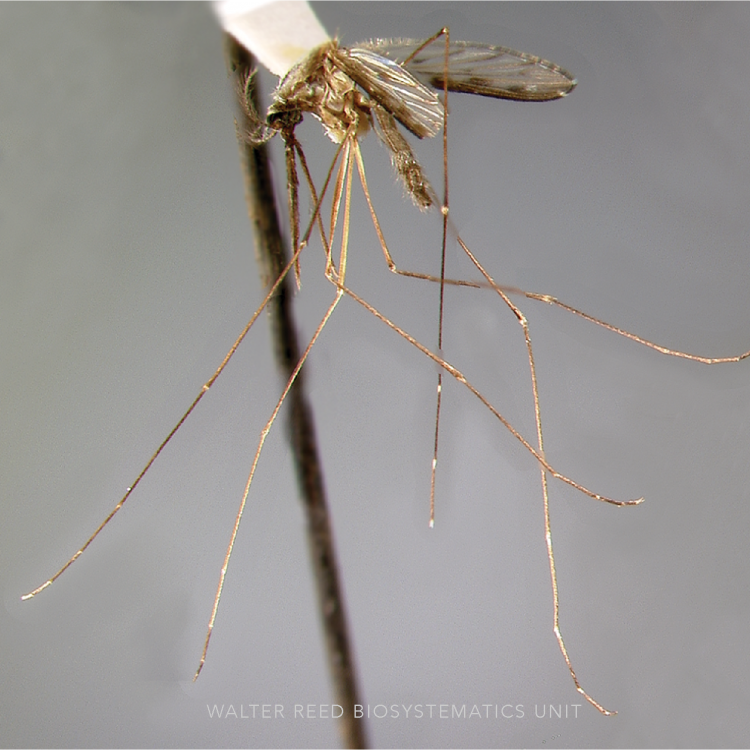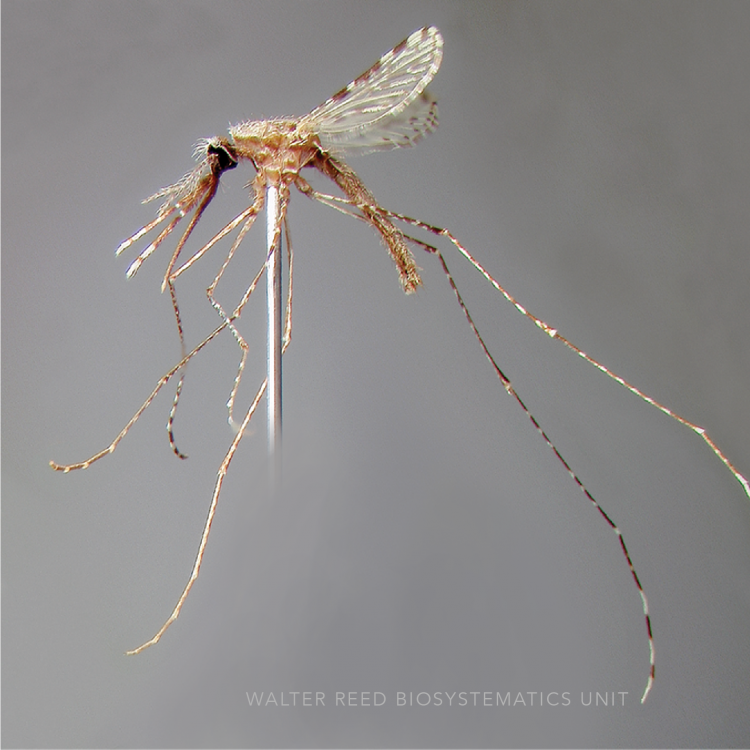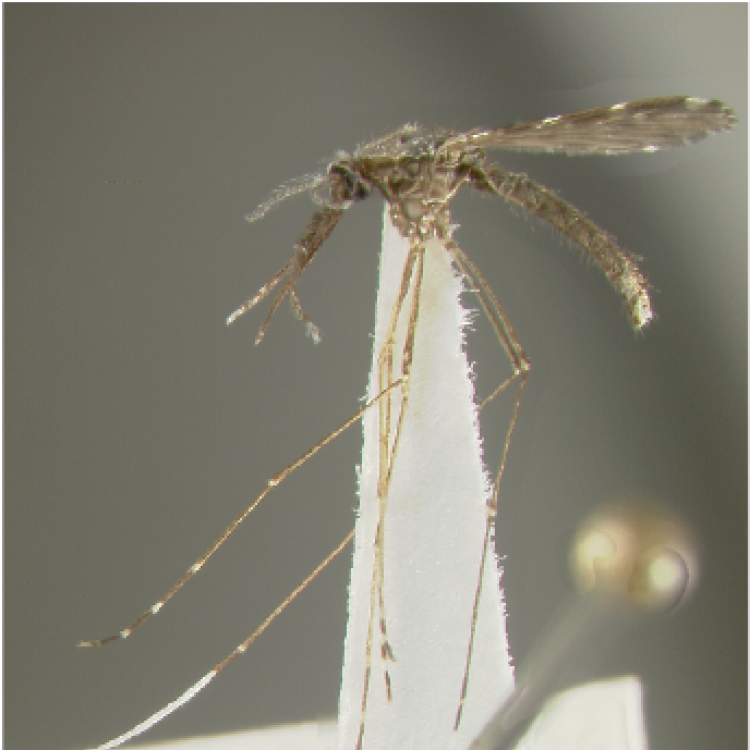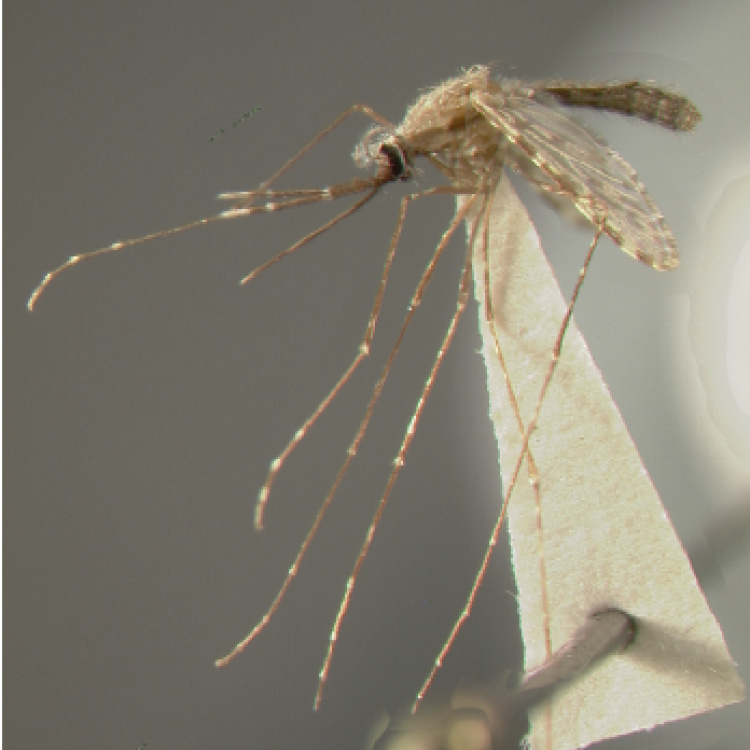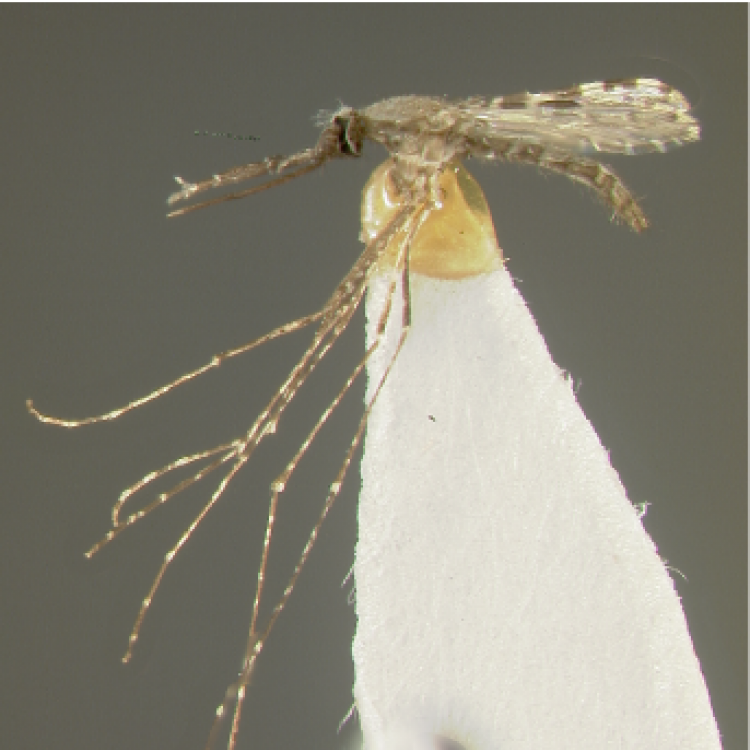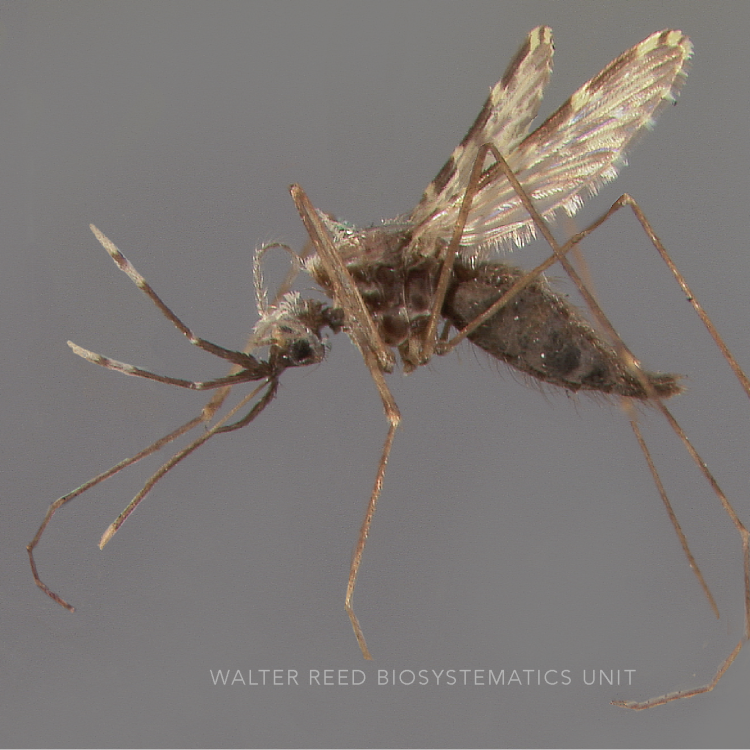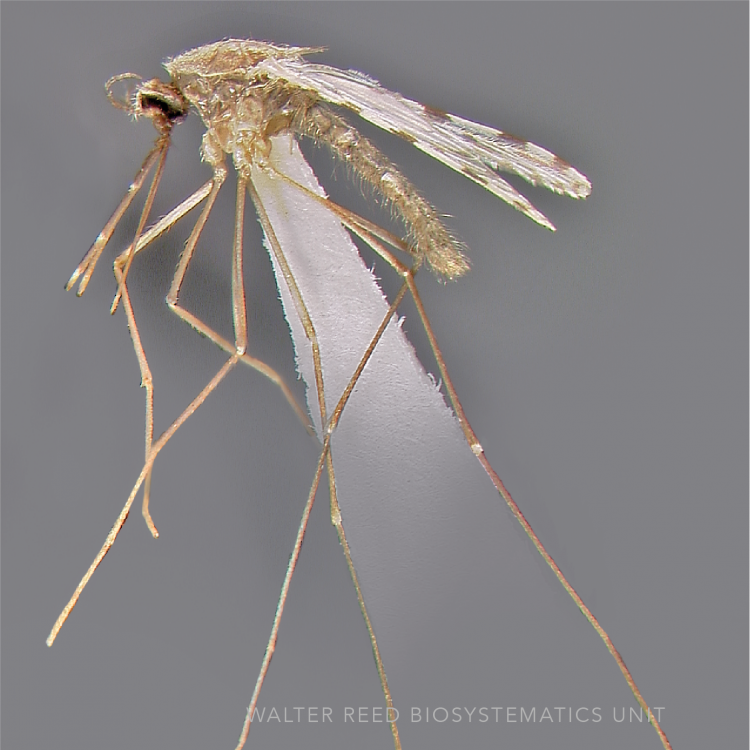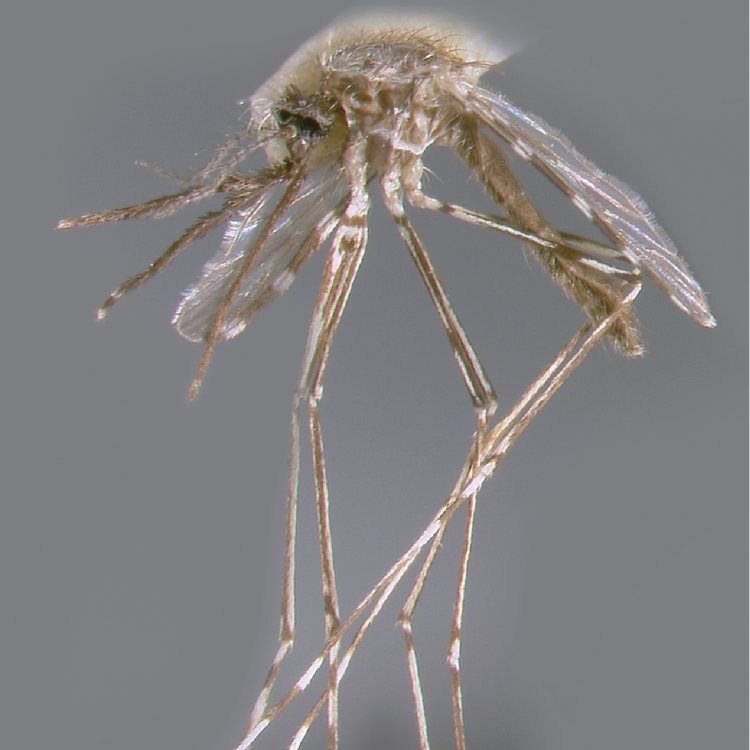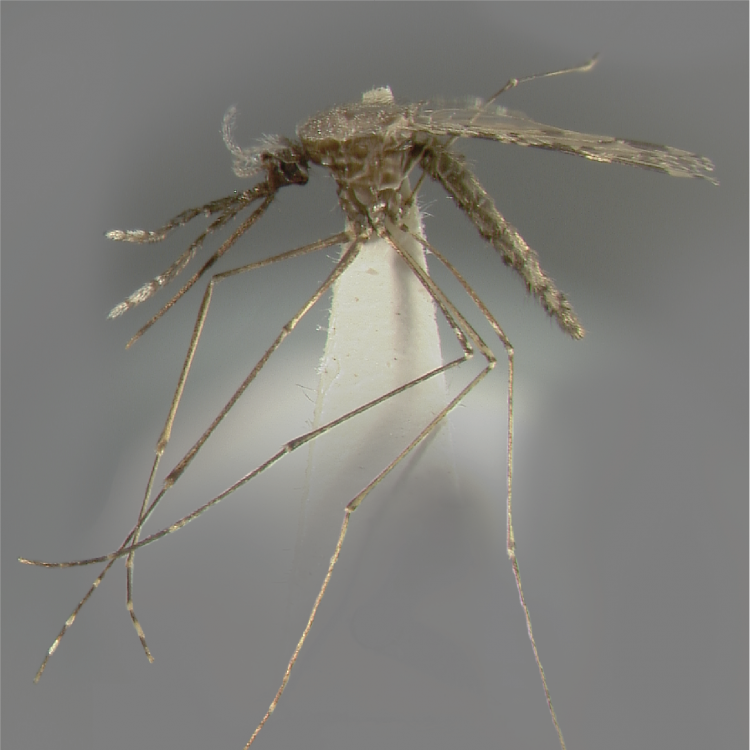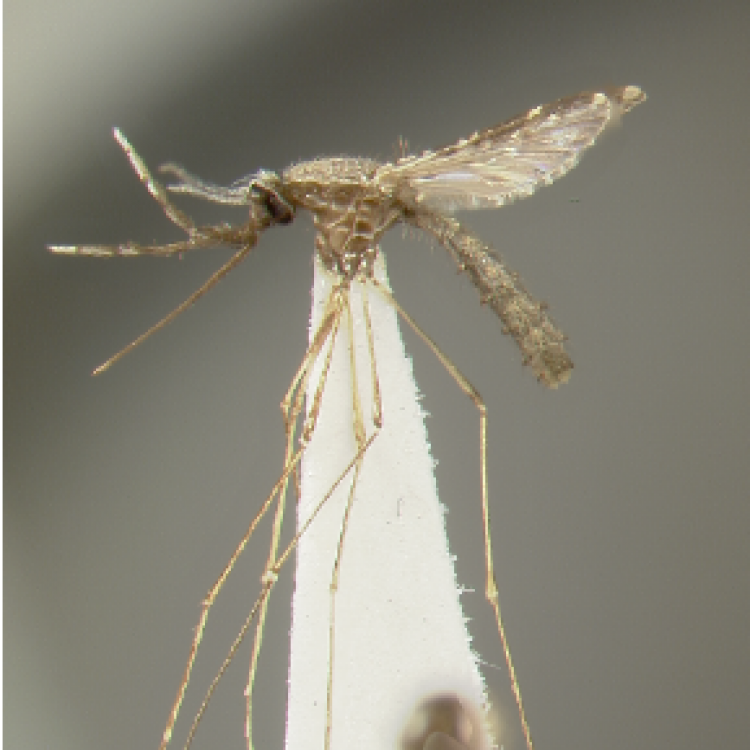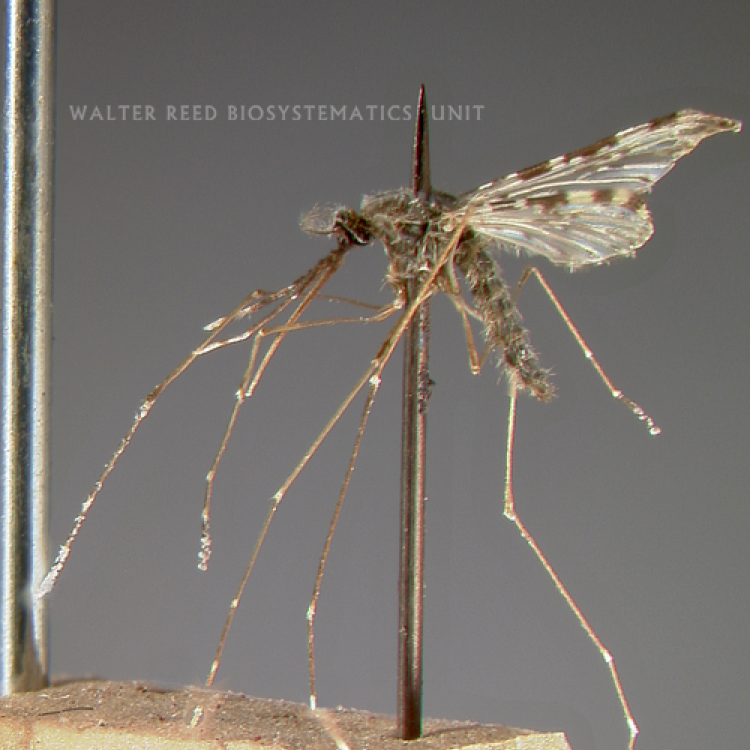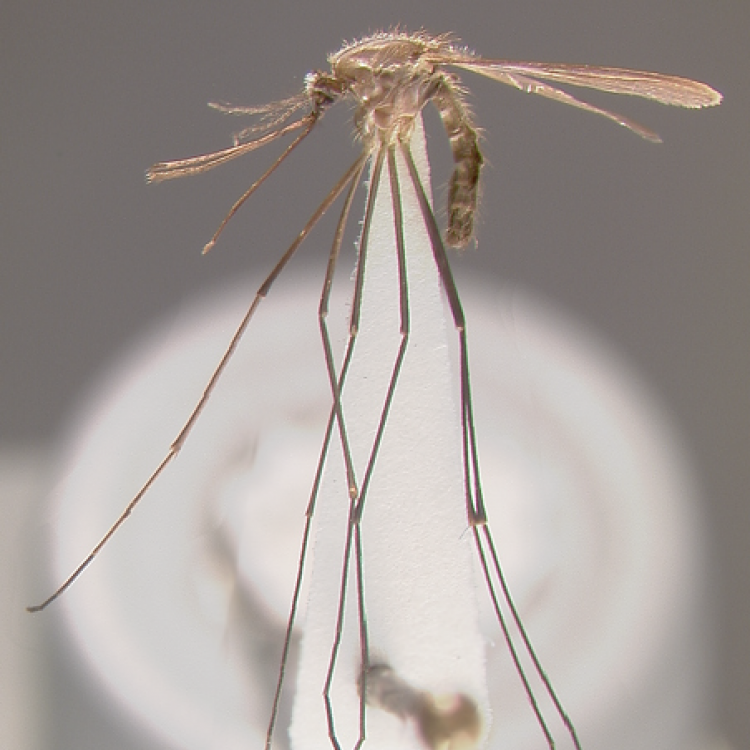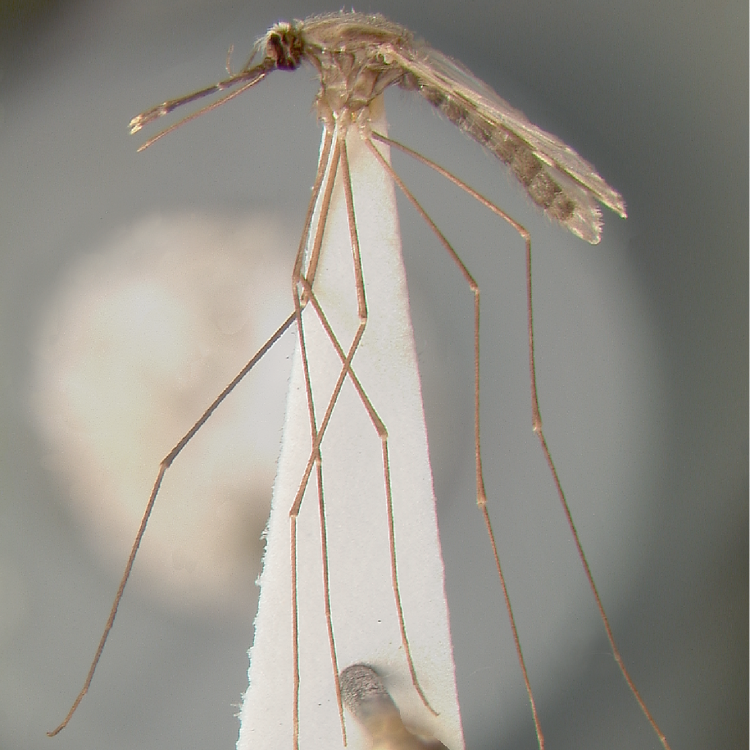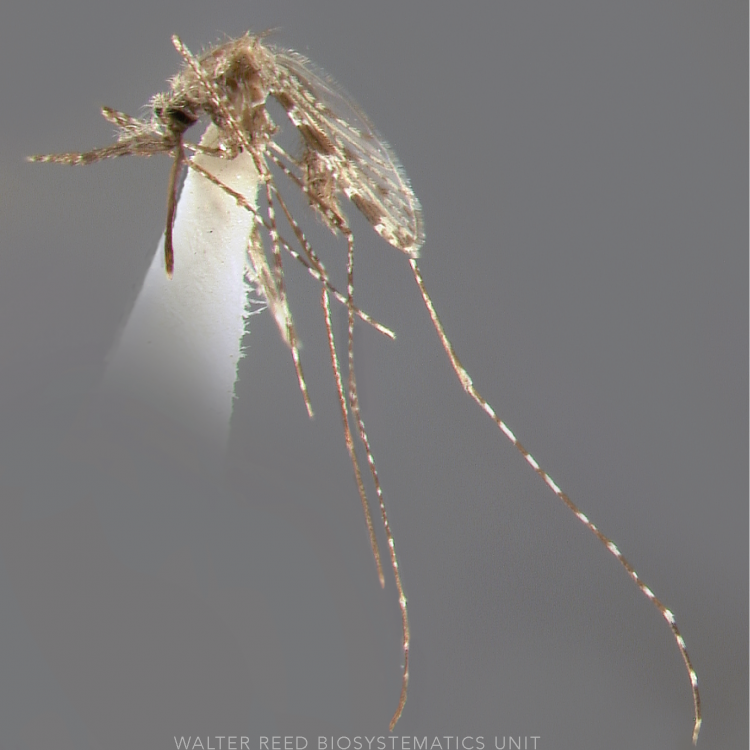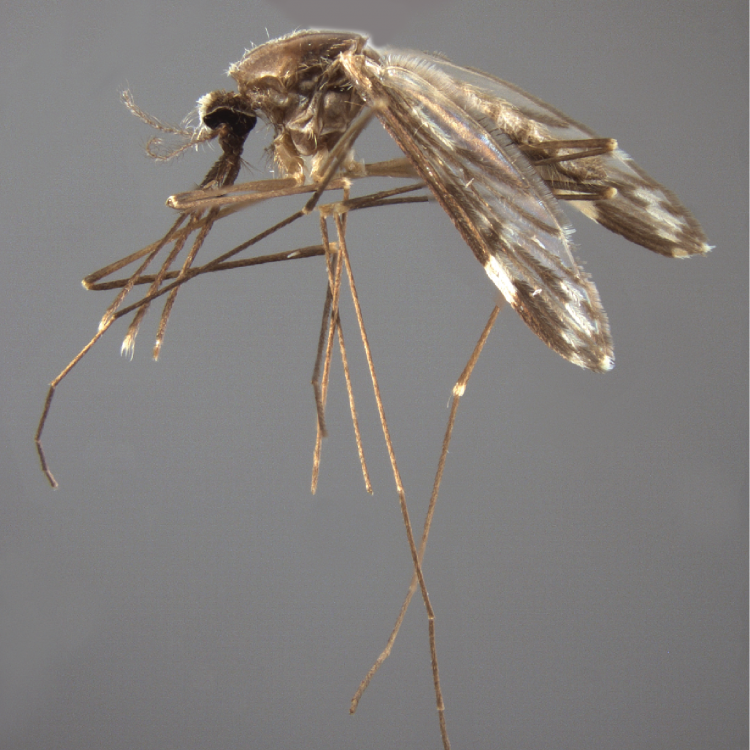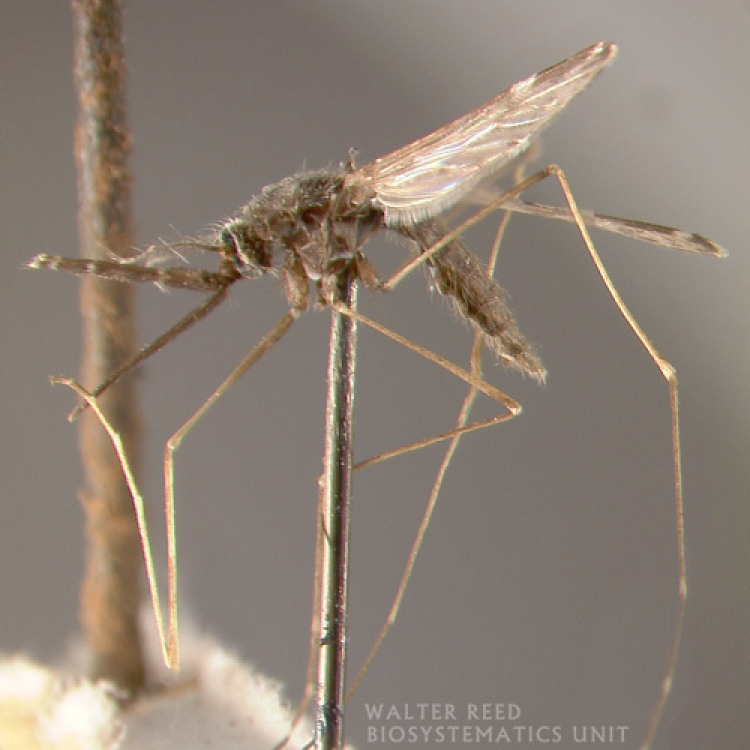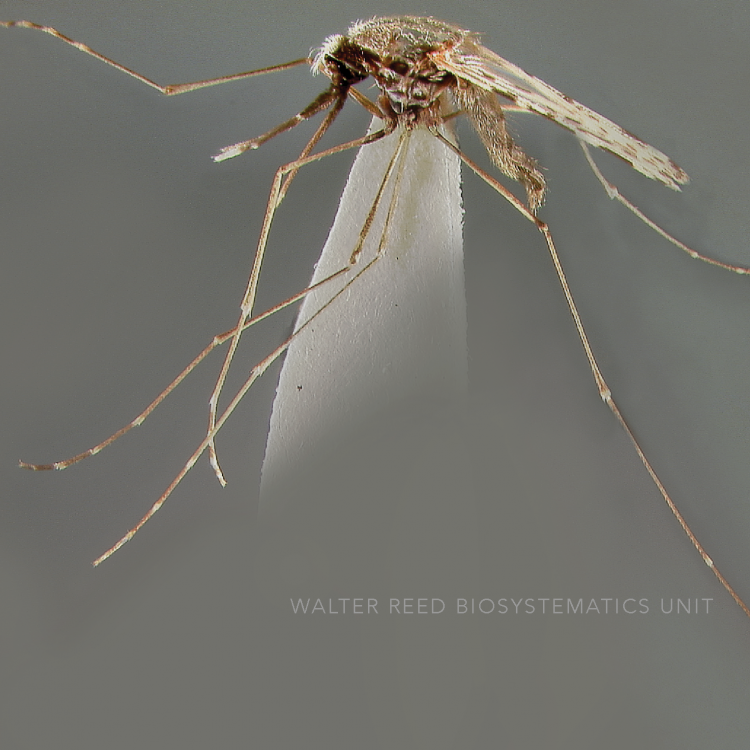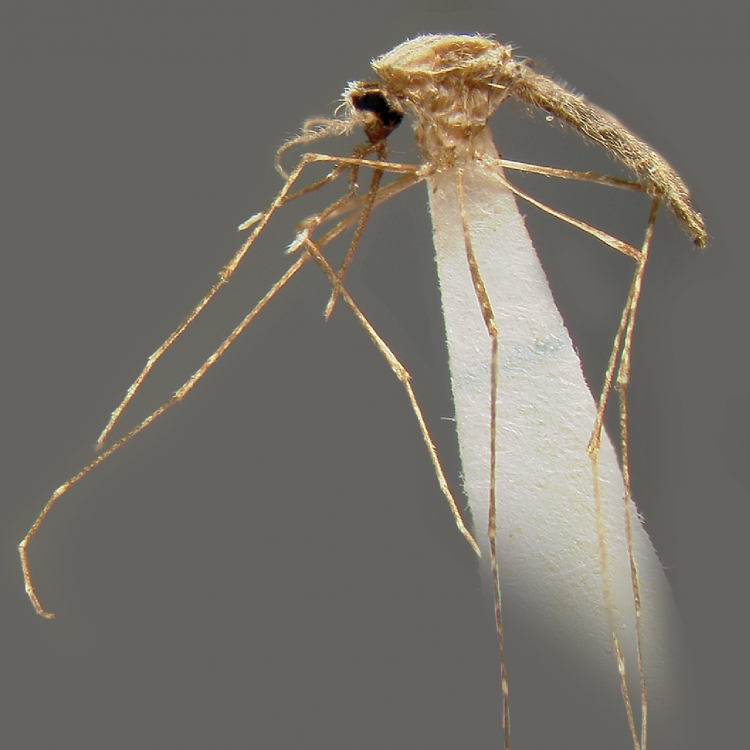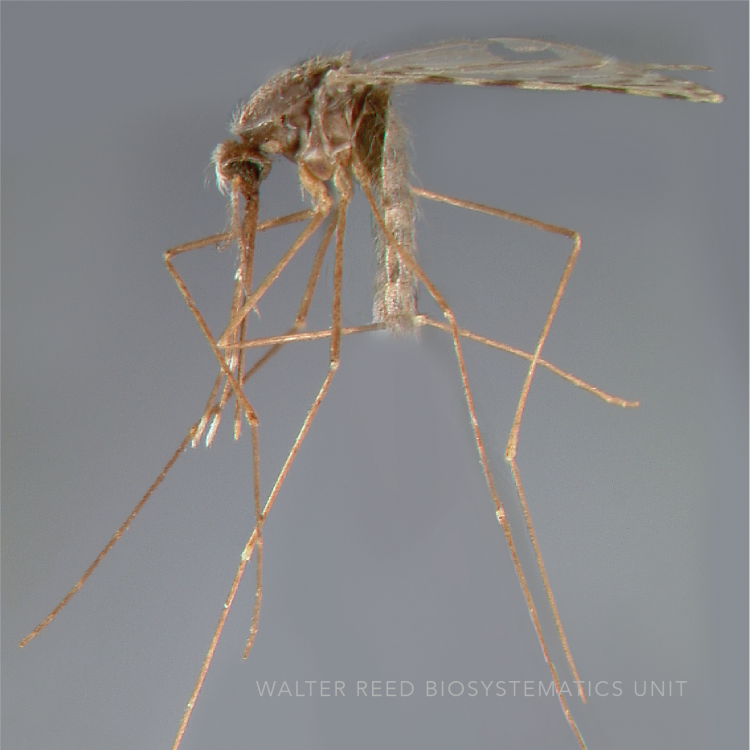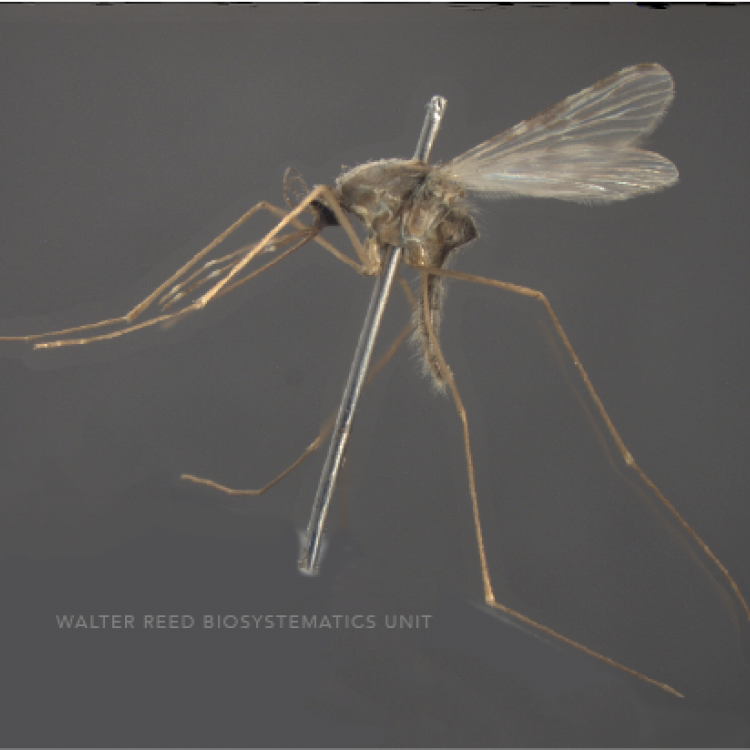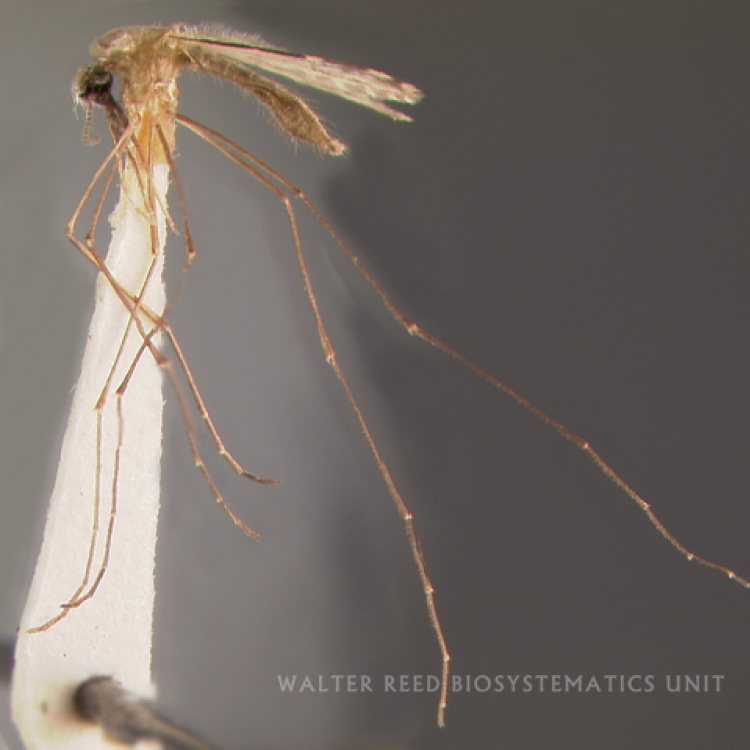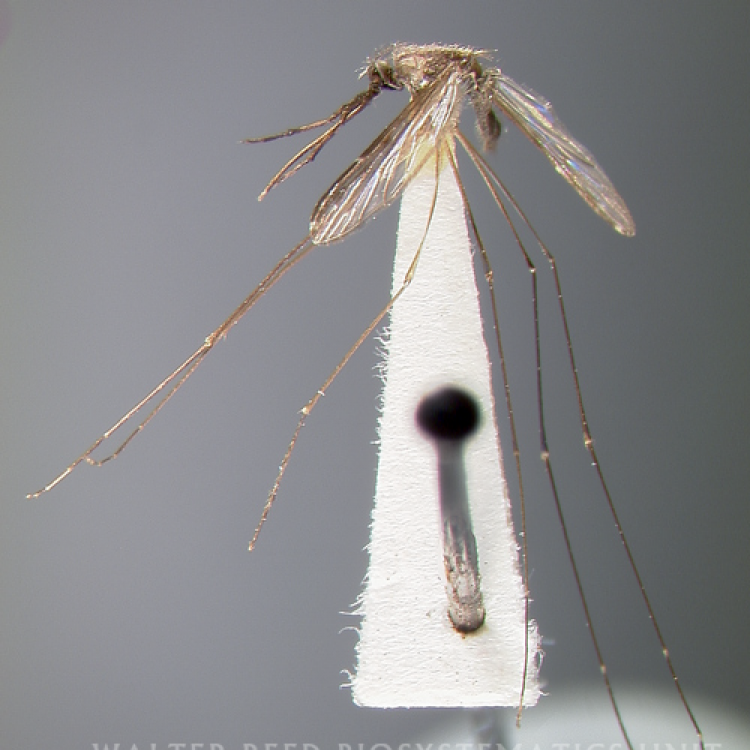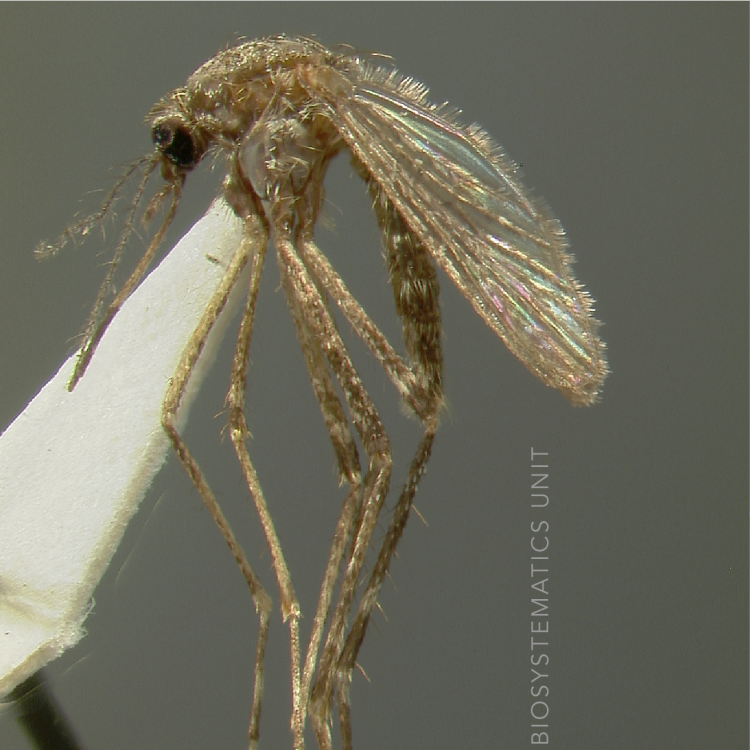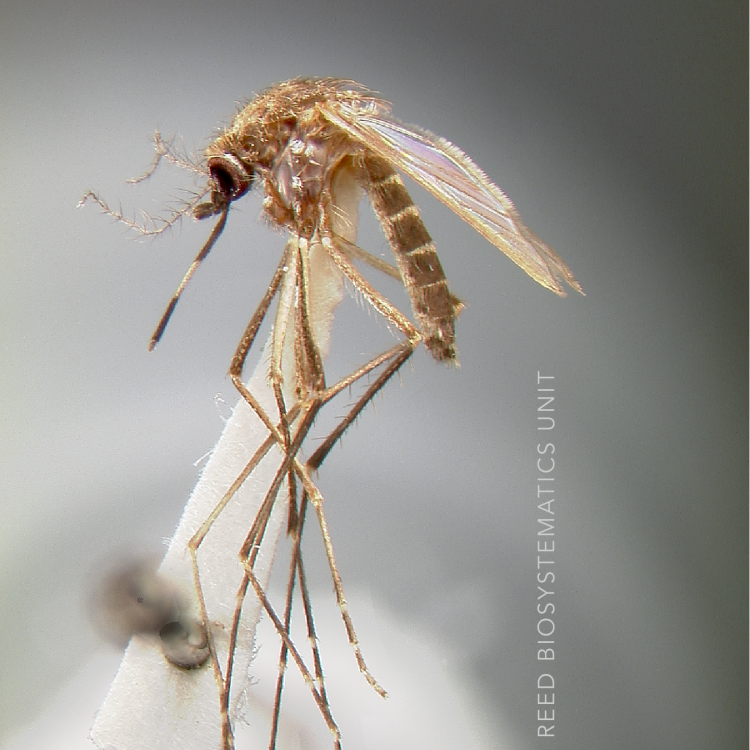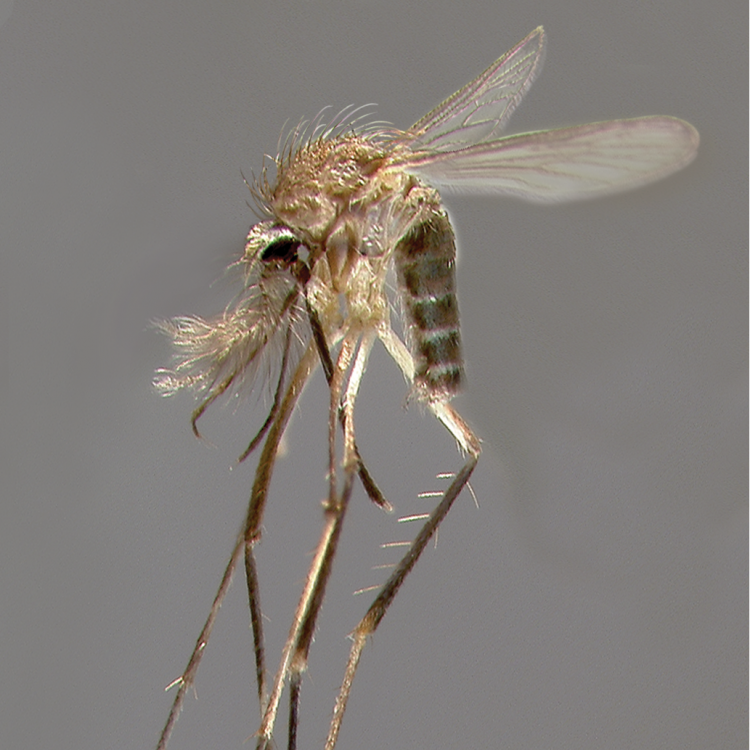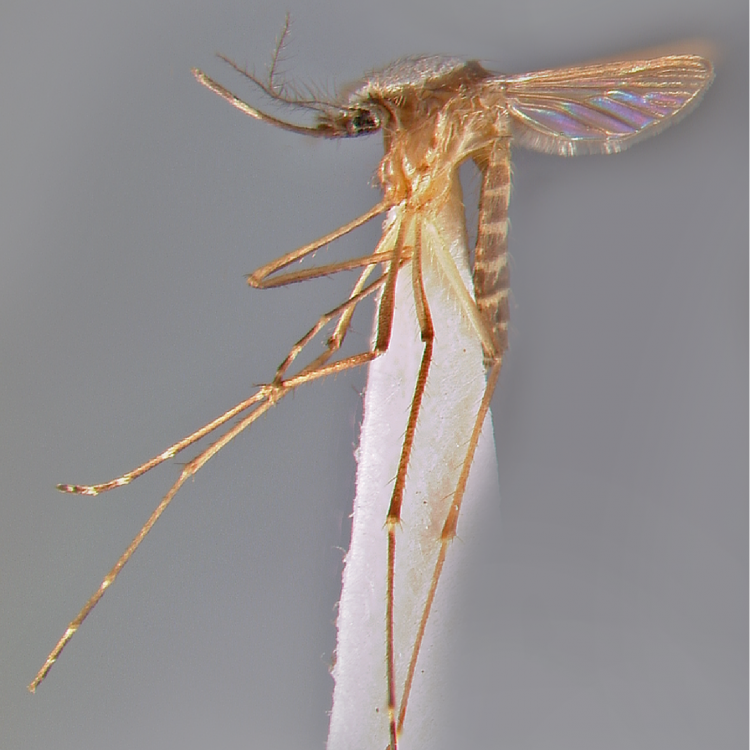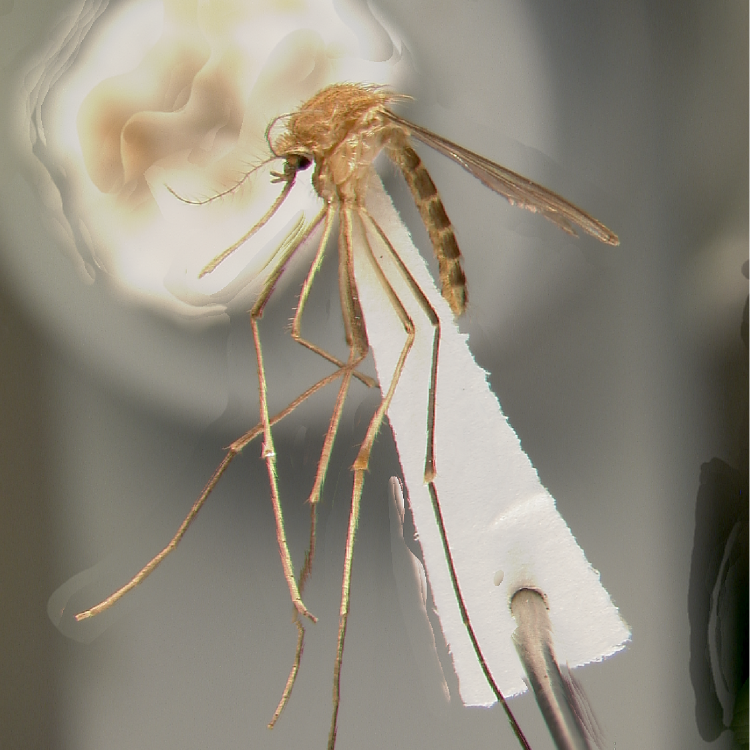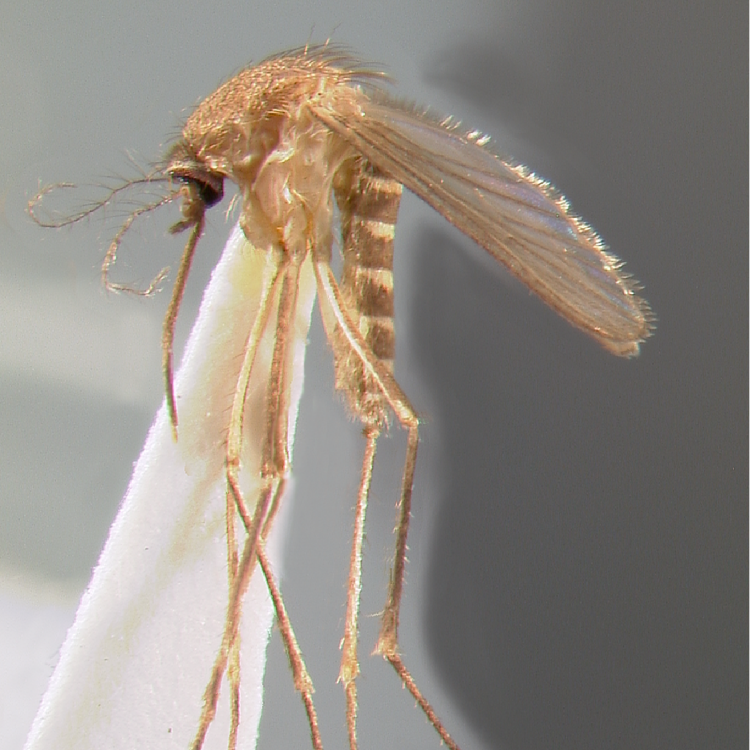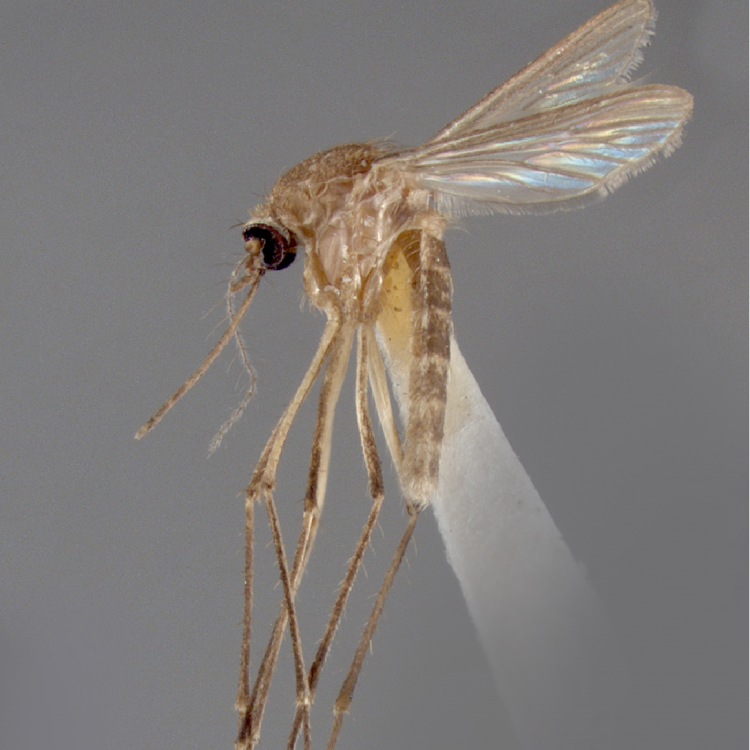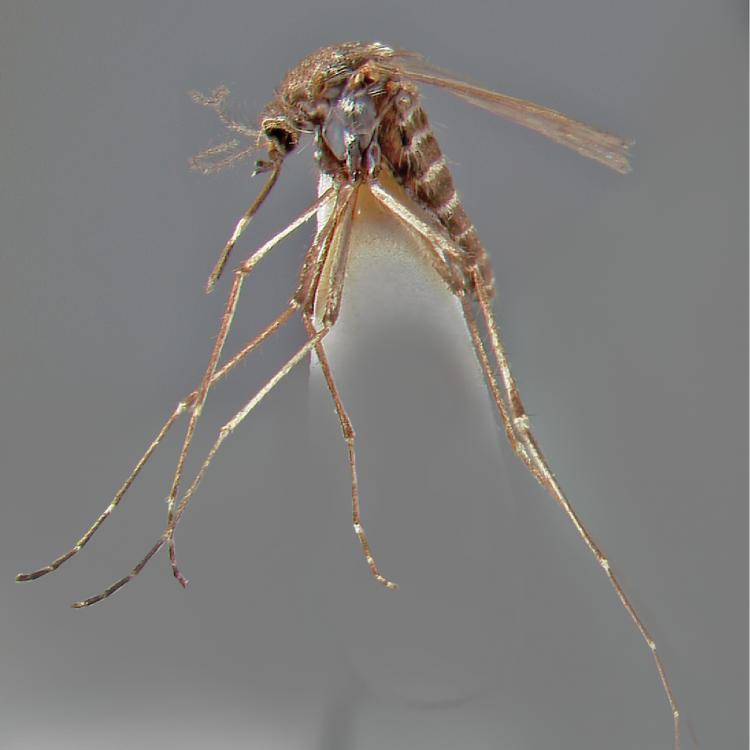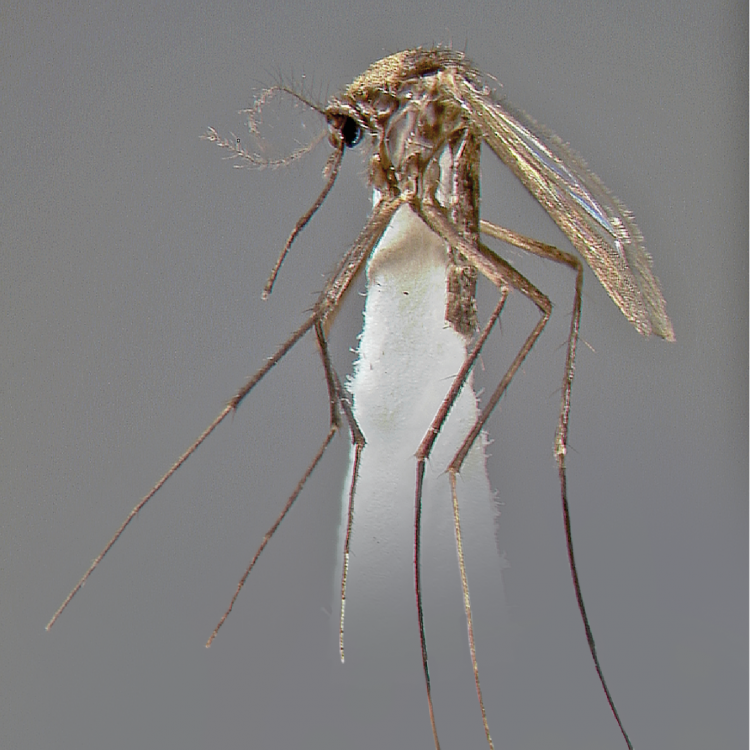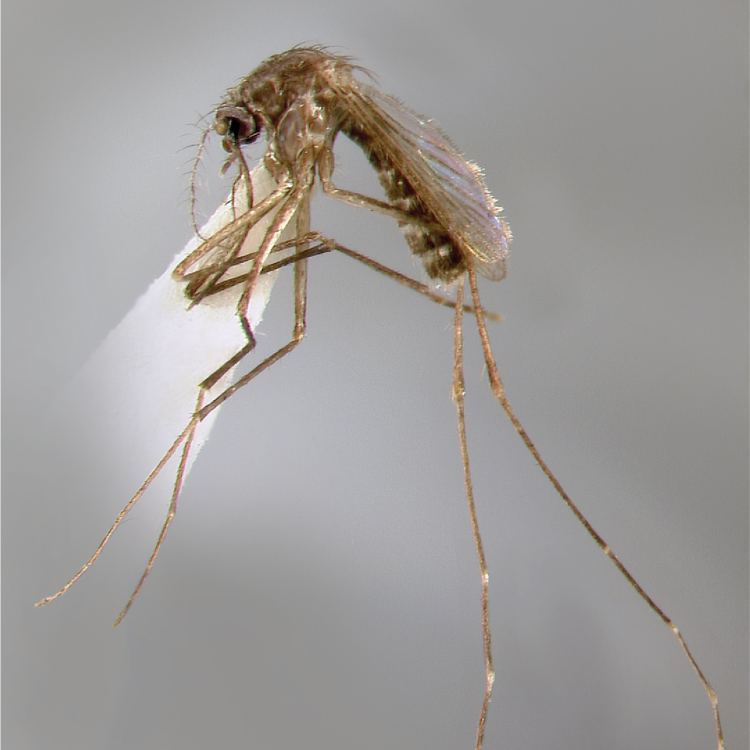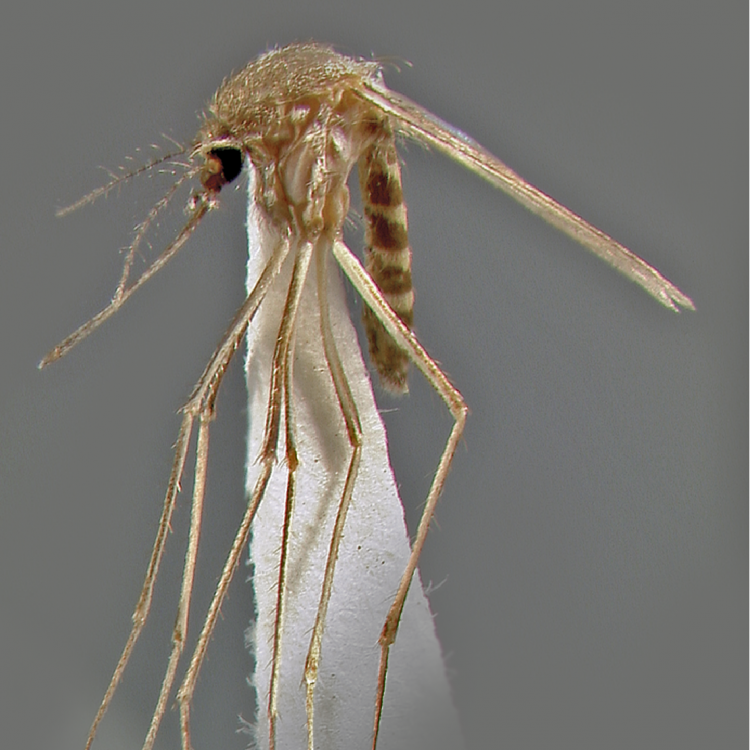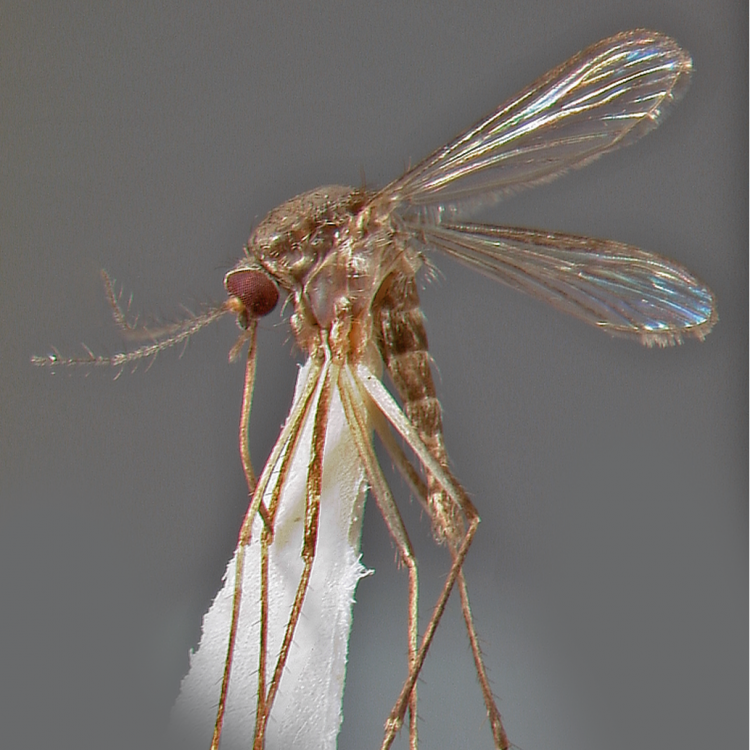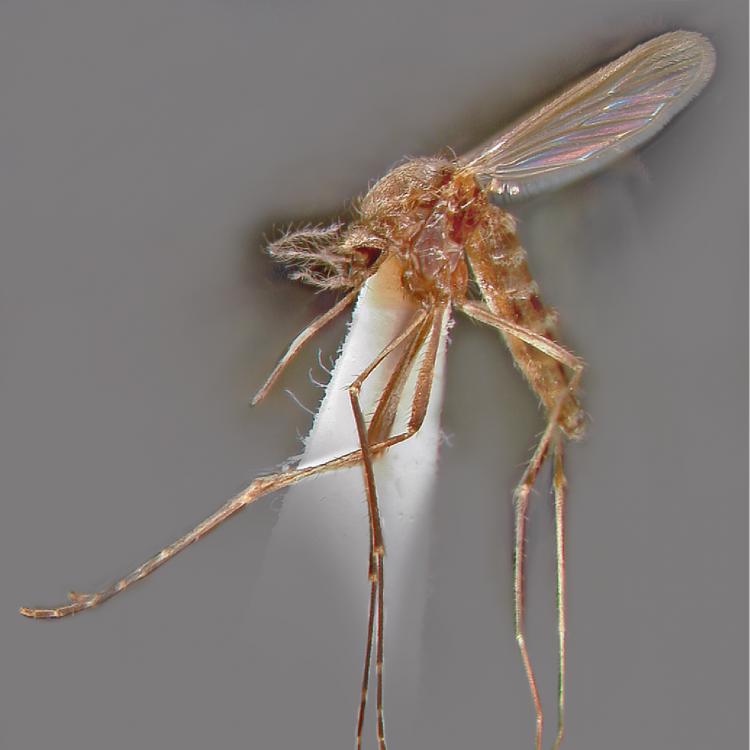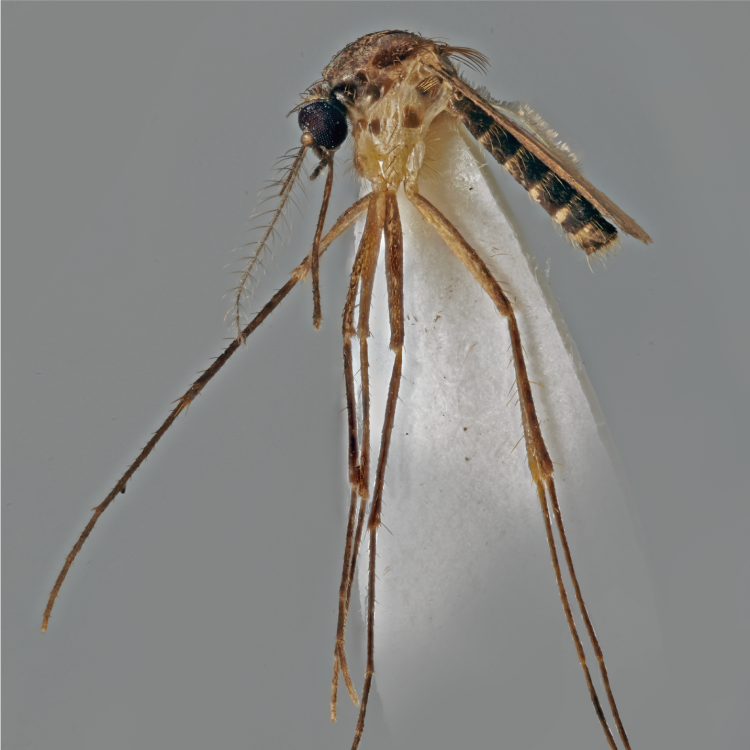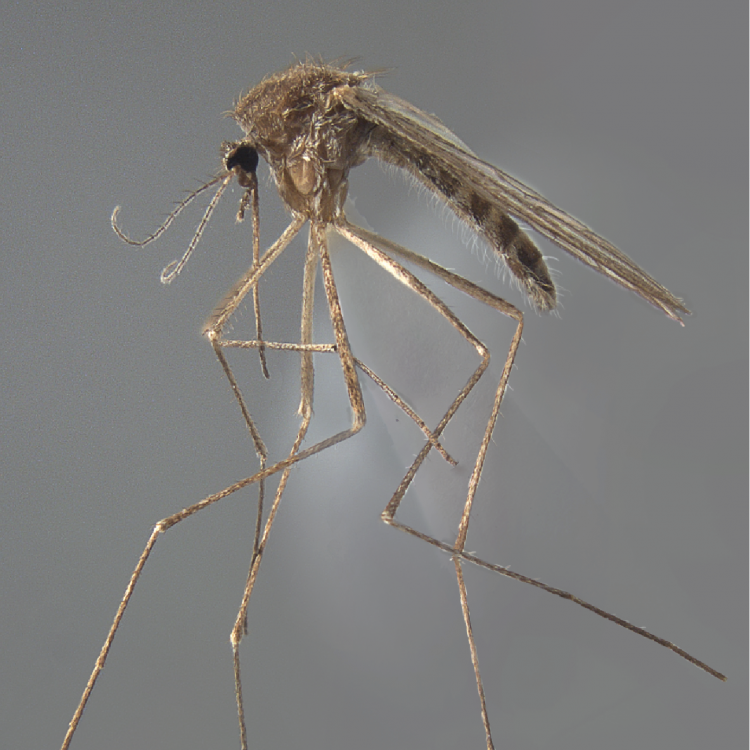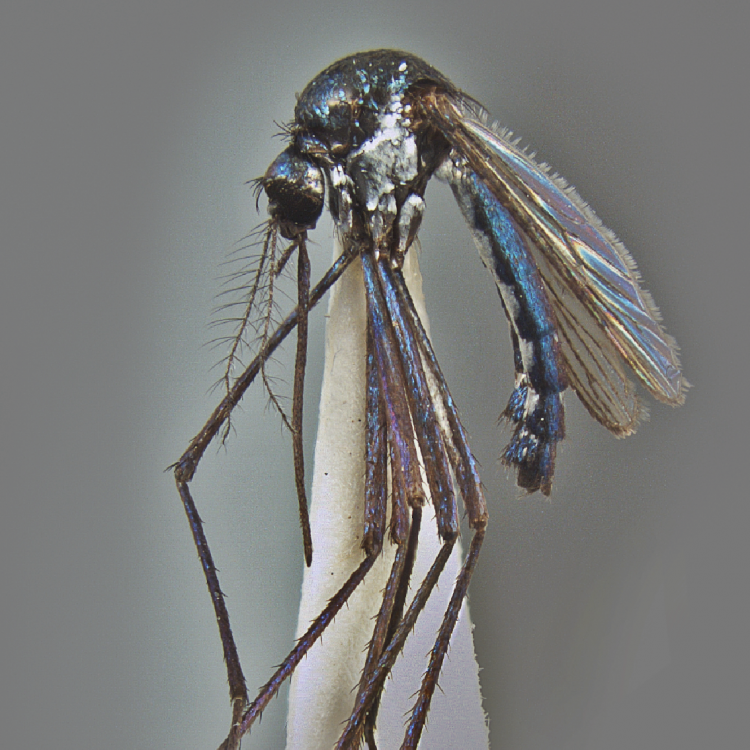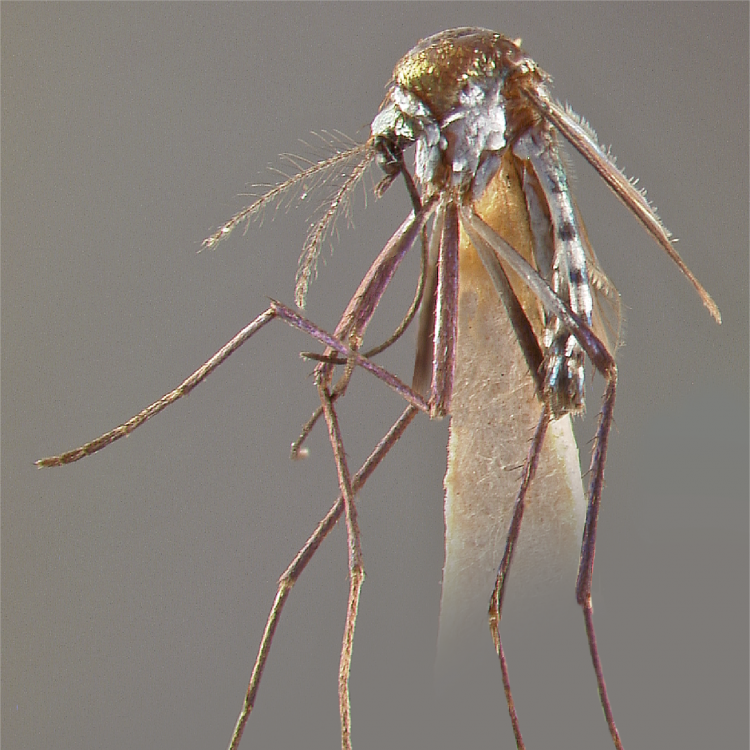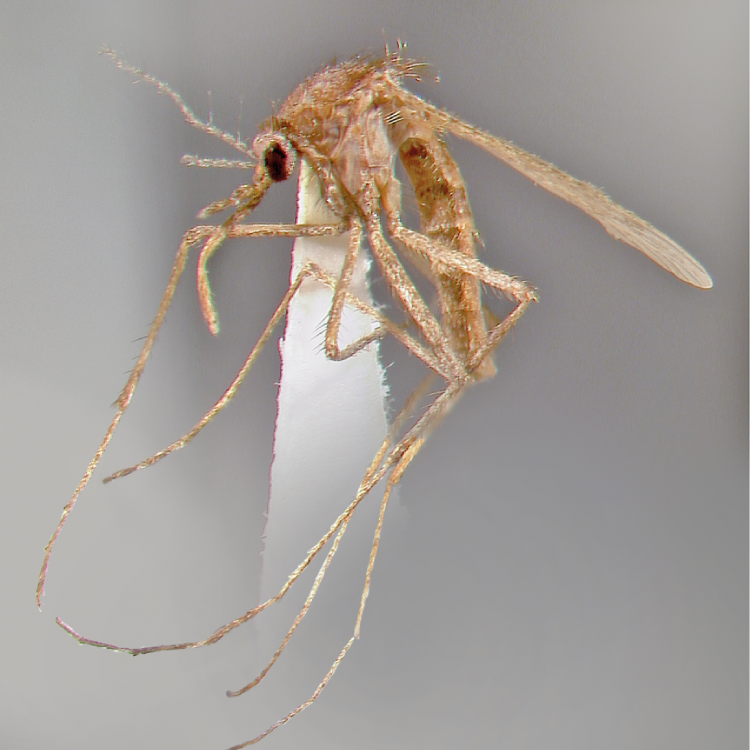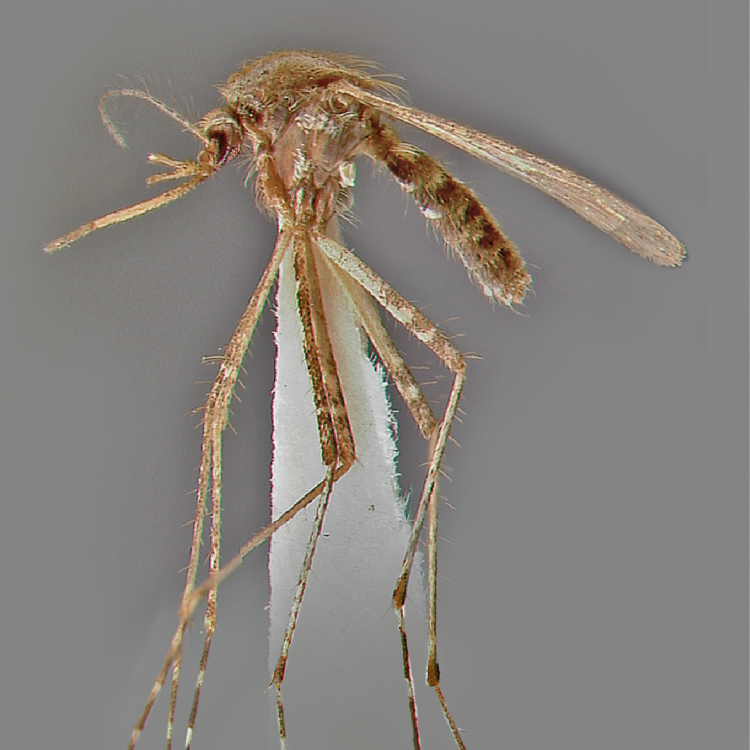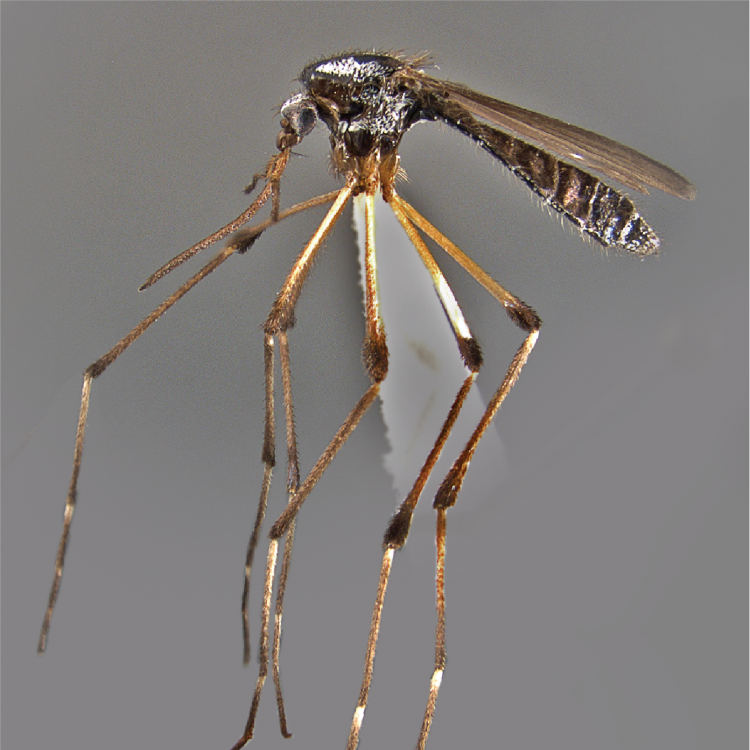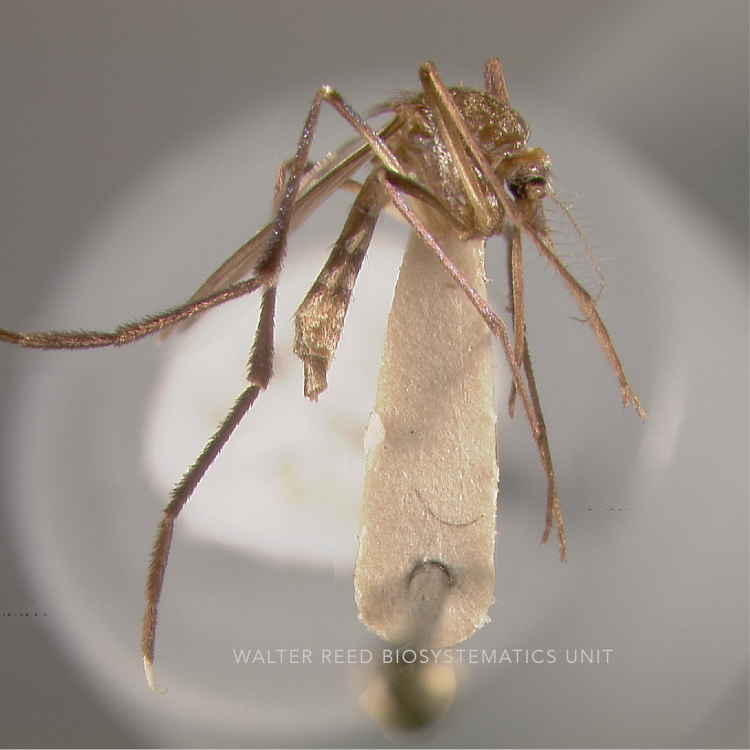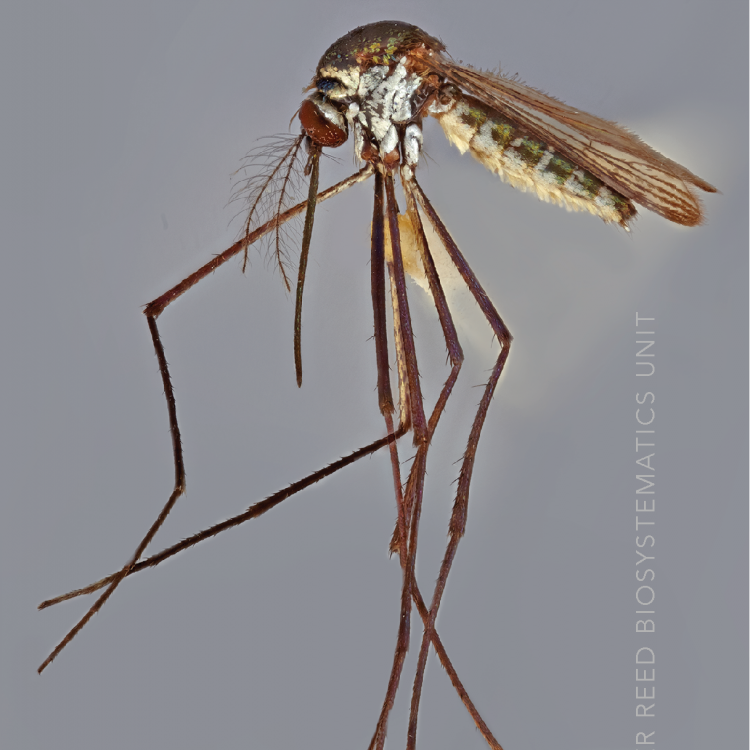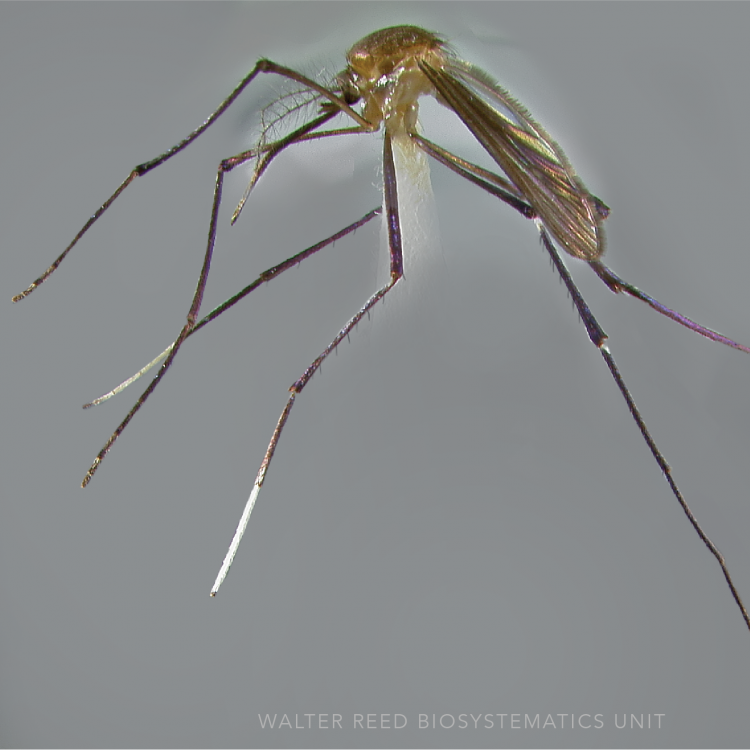AFROTROPICAL REGION
Etymology: Edmond Sergent
Anopheles sergentii is often referred to as the “desert malaria vector” in northern Africa, the Mediterranean basin and the Middle East. It comprises two valid subspecies—An. sergentii sergentii described from Algeria, and An. sergentii macmahoni Evans described from Kenya. The subspecies macmahoni has one synonym—An. barkhuusi Giaquinto-Mira, described from Ethiopia. These two taxa are placed in the Demeilloni Group (Myzomyia Series) along with six others—An. carteri Evans & de Meillon, An. demeilloni Evans, An. freetownensis Evans, An. garnhami Edwards, An. keniensis Evans and An. lloreti Gil Collado.
Type locality: Algeria
Type depository: Natural History Museum, London, England, United Kingdom (NHMUK)
DIAGNOSTIC CHARACTERS (Click photos to view; mouse over and click large photo to zoom in.)
ADULT (not illustrated): Head: Palpus with 3 pale bands; MPlp5 entirely pale; vertex with broad pale scales. Thorax: Scutal fossa without scales; scutum with broad silvery pruinose stripe with obvious pale scales in addition to setae, some erect pale scales anteriorly. upper proepisternal setae present; vertex with broad pale scales, lateral and posterior scales dark brown. Wing: Remigium pale-scaled; presector pale spot present; prehumeral pale and humeral pale spots absent; fringe-spots well marked at all veins except anal vein (1A); vein R without basal dark spot distal to humeral crossvein; vein R4+5 dark-scaled except for small pale spots at base and apex. Legs: Ta-III5 dark.
LARVA (not illustrated): Head: Seta 1-A single; setae 2,3-C usually single or with inconspicuous aciculae; seta 4-C <0.67 length of 2-C; seta 5-C slightly longer than 6-C; dorsal apotome with transverse pigmented band below bases of setae 5–7-C. Thorax: Seta 3-T palmate, well-developed; seta 9-M,T plumose and 10-M,T single. Abdomen: Seta 1-II–VII well-developed palmate, filaments > half leaflet length; tergal plates on segments III–VII not exceptionally large, with concave posterior border not encompassing small posterior accessory plates; segment VII tergal plate wider than distance between palmate setae; II–VII-Te without distinct scale tufts.
TAXONOMIC KEYS
Gillies & De Meillon 1968
Glick 1992
Mamedniyazov & Yerokhin 2005
Azari-Hamidian & Harbach 2009
Becker et al. 2010
![]()
WRBU - Anopheles - Afrotropical Region - Larva
![]()
WRBU - Anopheles - Western Palearctic Region - Adult
![]()
WRBU - Genera - Global - Adult
![]()
WRBU - Genera - Global - Larva
![]()
WRBU - Genera - Afrotropical - Adult
![]()
WRBU - Genera - Afrotropical - Larva
Exemplar DNA sequences
An. sergentii COI: MF631763-68; ITS2: KT160246-47
BIONOMICS
Immatures
Immature An. sergentii s.l. are found in desert oases and a range of water collections in irrigated areas. These habitats can be shaded or unshaded, clean or semi-polluted, fresh or slightly brackish, slow moving or stagnant, but always has plenty of vegetation and/ or algae. Anopheles sergentii s.l. overwinter either as larvae or as adult females.
Adults
Female An. sergentii s.l. feed avidly cattle, but will also feed on people, sheep, goats, horses, and birds. Where cattle are corralled next to living quarters, cattle act as zooprophylaxis, diverting host-seeking An. sergentii s.l. away from people. Anopheles sergentii s.l. rest indoors in homes or animal sheds.
DISTRIBUTION NOTES
Albania, Algeria, Bulgaria, Burkina Faso, Cameroon, Chad, Côte d'Ivoire, Djibouti, Egypt, Eritrea, Ethiopia, Greece, Guinea, Iran, Iraq, Israel (and Gaza Strip & West Bank), Italy (includes Sicily), Jordan, Libya, Kenya, Mali, Morocco, Pakistan, Portugal, Saudi Arabia, Senegal, Spain (includes Canary Islands), Somalia, South Sudan, Sudan, Tunisia, United Arab Emirates (UAE), Yemen.
Anopheles sergentii is found from Algeria and as far south in Africa as Kenya and Cameroon, northeast to Italy, Greece and Albania, and southeast to Pakistan. Anopheles sergentii macmahoni appears limited to the sub-Saharan belt of Africa.

WRBU VECTOR HAZARD REPORTS
VHR: Medically Important Mosquitoes of EUCOM
View other WRBU Vector Hazard Reports
Available GIS Models:
IMPORTANT REFERENCES (full citations below)
Theobald 1907: 68 (F*; Pyretophorus)
Séguy 1924: 161 (L*)
Theodor 1925: 381 (E*)
Senevet 1930: 303 (P*)
Christophers 1933: 193 (M*, F*, P, L*, E)
Saliternik 1955: 445 (L*, E*; bionomics)
Senevet & Andarelli 1955
Mattingly & Knight 1956: 97 (taxonomy)
Gillies & De Meillon 1968 (F, L; keys; comparison to subspecies macmahoni)
Glick 1992 (F*; key, taxonomy, distribution)
Abdullah & Merdan 1995 (distribution; Saudi Arabia)
Amr et al. 1997 (distribution; Jordan)
Trari et al. 2002: 331 (distribution; Morocco)
Mamedniyazov & Yerokhin 2005 (keys, distribution, Turkmenistan
Azari-Hamidian & Harbach 2009 (F, L; keys, distribution; Iran)
Sinka et al. 2010: 117 (bionomics review, distribution, niche model)
Becker et al. 2010: 183 (M*, F*, L*; keys, taxonomy, distribution, bionomics)
Kyalo et al. 2017 (distribution; sub-Saharan Africa)
Robert et al. 2019 (distribution; western Palaearctic)
CURRENT SYNONYMS
None
CURRENT SUBSPECIES
ssp. syn. barkhuusi Giaquinto-Mira
1950: 294 (L; macmahoni var.). Type locality: Valley of Becilo, Ethiopia (NE). References: Stone et al. 1959: 54 (synonymy).
ssp. macmahoni Evans
1936: 538 (M, F, P, L*; as species). Type locality: Isiolo, [Central] Kenya (NHMUK). Distribution: Algeria, Burkina Faso, Cote d'Ivoire, Djibouti, Eritrea, Ethiopia, Guinea, Kenya, Mali, Republic of South Africa, Senegal, Somalia, Sudan & South Sudan. References: De Meillon 1947b: 187 (M*, F*, L*); Lewis 1956a: 481 (L); Mattingly & Knight 1956: 97 (taxonomy, to subspecies); Rodhain et al. 1977 (distribution); Kyalo et al. 2017 (distribution; sub-Saharan Africa). Etymology: James Patrick McMahon. Informal name: MacMahon Kenyan Nail Mosquito.
CITED REFERENCES
Abdullah, M.A.R., & Merdan, A.I. (1995). Distribution and ecology of the mosquito fauna in the southwestern Saudi Arabia. Journal of the Egyptian Society of Parasitology, 25(3), 815–837.
Amr, Z.S., Al-Khalili, Y.H., & Arbaji, A. (1997). Larval mosquitoes collected from northern Jordan and the Jordan Valley. Journal of the American Mosquito Control Association, 13(4), 375–378.
Azari-Hamidian, S., & Harbach, R.E. (2009). Keys to the adult females and fourth-instar larvae of the mosquitoes of Iran (Diptera: Culicidae). Zootaxa, 2078, 1–33.
Becker, N., Petrić, D., Zgomba, M., Boase, C., Madon, M., Dahl, C., & Kaiser, A. (2010). Mosquitoes and their control (Second ed.). Berlin Heidelberg: Springer-Verlag.
Christophers, S.R. (1933). The fauna of British India, including Ceylon and Burma. Diptera.Vol. IV. Family Culicidae. Tribe Anophelini. London: Taylor and Francis.
De Meillon, B. (1947b). The Anophelini of the Ethiopian geographical region. Publications of the South African Institute for Medical Research, 10(49), 1–272.
Evans, A.M. (1936). Two new anopheline mosquitoes from Kenya. Annals of Tropical Medicine and Parasitology, 30, 533–540.
Giaquinto-Mira, M. (1950). Notes on the geographical distribution and biology of Anophelinae and Culicinae in Ethiopia. Rivista di Malariologia (Rome), 281–313.
Gillies, M.T., & de Meillon, B. (1968). The Anophelinae of Africa, south of the Sahara (Ethiopian zoogeographical region). Publications of the South African Institute for Medical Research, 54, 1–343.
Glick, J.I. (1992). Illustrated key to the female Anopheles of southwestern Asia and Egypt (Diptera: Culicidae). Mosquito Systematics, 24(2), 125–153.
Hay, S.I., Sinka, M.E., Okara, R.M., Kabaria, C.W., Mbithi, P.M., Tago, C.C., …Godfray, H.C.J. (2010). Developing global maps of the dominant Anopheles vectors of human malaria. PLoS Medicine, 7(2): e1000209.
Kyalo, D., Amratia, P., Mundia, C.W., Mbogo, C.M., Coetzee, M., & Snow, R.W. (2017). A geo-coded inventory of anophelines in the Afrotropical Region south of the Sahara: 1898–2016. Wellcome Open Research, 2, 57.
Lewis, D.J. (1956). The Anopheline mosquitoes of the Sudan. Bulletin of Entomological Research, 47(3), 475-494.
Mamedniyazov О., Yerokhin P. Illustrated keys of malaria mosquitoes (Culicidae, Anophelinae) in Middle Asia. – Ashgabat, 2005, 68 pp.
Mattingly, P.F., & Knight, K.L. (1956). The mosquitoes of Arabia. I Bull Brit Mus, 89–141.
Robert, V., Günay, F., Le Goff, G., Boussès, P., Sulesco, T., Khalin, A., Medlock, J.M., Kampen, H., Petrić, D. & F. Schaffner. (2019). Distribution chart for Euro-Mediterranean mosquitoes (western Palaearctic region). Journal of the European Mosquito Control Association, 37, 1–28.
Rodhain, F., Boutonnier, A., & Coulanges, P. (1977). Bibliographie des Culicides de Madagascar. Archives des l’Instituts Pasteur de Madagascar, 46, 485–495.
Saliternik, Z. (1955). The specific biological characteristics of Anopheles (Myzomyia) sergentii (Theo.) and their correlation with malaria control in Israel. Bulletin of Entomological Research, 46, 445–462.
Seguy, E. (1924). Les moustiques de l'Afrique Mineure, de l'Egype et de la Syrie. Encyclopedie Entomologique (A), 1, 1–257.
Senevet, G. (1930). Contribution à l'étude des nymphes de culicides. Description de celles de certain anophelines et plus spécialement des espèces européennes et meditérranéennes. Archives de l'Institut Pasteur d'Algérie, 8, 297–382.
Senevet, G., Andarelli, L., Buffart, G., & Duzer, A. (1955). Quelle est la limite septentrionale de Culex deserticola Kirk, en Afrique du Nord? Arch Inst Pasteur Alger Algiers, 51–53.
Stone, A., Knight, K.L., & Starcke, H. (1959). A synoptic catalog of the mosquitoes of the World (Diptera, Culicidae) (Vol. 6). Washington, D.C.: Entomological Society of America, The Thomas Say Foundation.
Theobald, F.V. (1907). A monograph of the Culicidae of the world (Vol. IV). London.
Theodor, O. (1925). Observations on Palestinian Anopheles. Bulletin of Entomological Research, 15, 377–382.
Trari, B., Dakki, M., Himmi, O., & El Agbani, M.A. (2002). Le moustiques (Diptera: Culicidae) du Maroc: Revue bibliographique (1916–2001) et inventaire des espèces. Bulletin de la Société de pathologie exotique (Paris), 96(4), 329–334.
CITE THIS PAGE
Walter Reed Biosystematics Unit (Year). Anopheles sergentii species page. Walter Reed Biosystematics Unit Website, http://wrbu.si.edu/vectorspecies/mosquitoes/sergentii, accessed on [date (e.g. 03 February 2020) when you last viewed the site].



